


































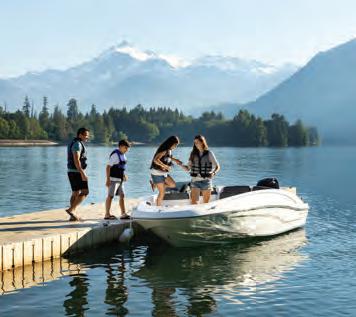






Embarking on the open water is an exhilarating experience, flled with the promise of adventure and relaxation. Whether you’re a seasoned sailor or a weekend cruiser, protecting your vessel with proper insurance is not just a choice—it’s a necessity. Explore the reasons why every boat owner should prioritize boat insurance for a worry-free voyage.
The open water can be unpredictable, with unexpected storms, collisions, or other potential accidents. Boat insurance can give you fnancial protection if there is damage to your vessel, providing coverage for repairs or replacement.
Accidents on the water can result in damage to other boats, docks, or even injuries to passengers. Boat insurance offers liability coverage, which can pay for damages or injuries you’re liable for while boating, up to specifed limits, and lawsuit costs if you’re sued. This includes damage you cause to another watercraft or if someone on or near your boat is injured and you’re found to be legally responsible.
Unfortunately, boat theft and vandalism are realities that boat owners face. Boat insurance has comprehensive and collision coverage that can protect you against events outside of your control, including theft and vandalism.
Accidents on the water may lead to injuries for you or your passengers. Boat insurance offers a range of optional medical payments coverage limits, helping to cover medical expenses if you are in an accident or someone is hurt on your boat, regardless of fault.
If you fnanced the purchase of your boat, most lenders require insurance coverage to protect their investment. Having boat insurance not only fulflls these requirements but also gives you peace of mind knowing that your fnancial interests are safeguarded.


Some water municipalities and marinas may require proof of insurance for docking or accessing certain areas. Boat insurance allows you the fexibility to explore different destinations without worrying about entry restrictions.
Emergency towing and assistance
Progressive boat insurance can include optional Sign & Glide® On-Water Towing coverage. If your boat is disabled or breaks down on the water, Sign & Glide® pays for on-water towing, jump starts, soft un-groundings, and fuel delivery.
Wreckage removal
If your boat sinks, Progressive boat insurance will cover the cost of removing your boat from the water (if removal is legally required).
Investing in boat insurance is not just about protecting a valuable asset; it’s about safeguarding the memories, experiences, and joy that come with your on-water adventures. Don’t let unforeseen circumstances disrupt your journey—navigate with confdence, knowing that Progressive boat insurance has you covered. Ensure a smooth and worry-free voyage, because when it comes to your boat, peace of mind is the ultimate luxury.
Scan to get a quote in as little as 4 minutes
learn more.




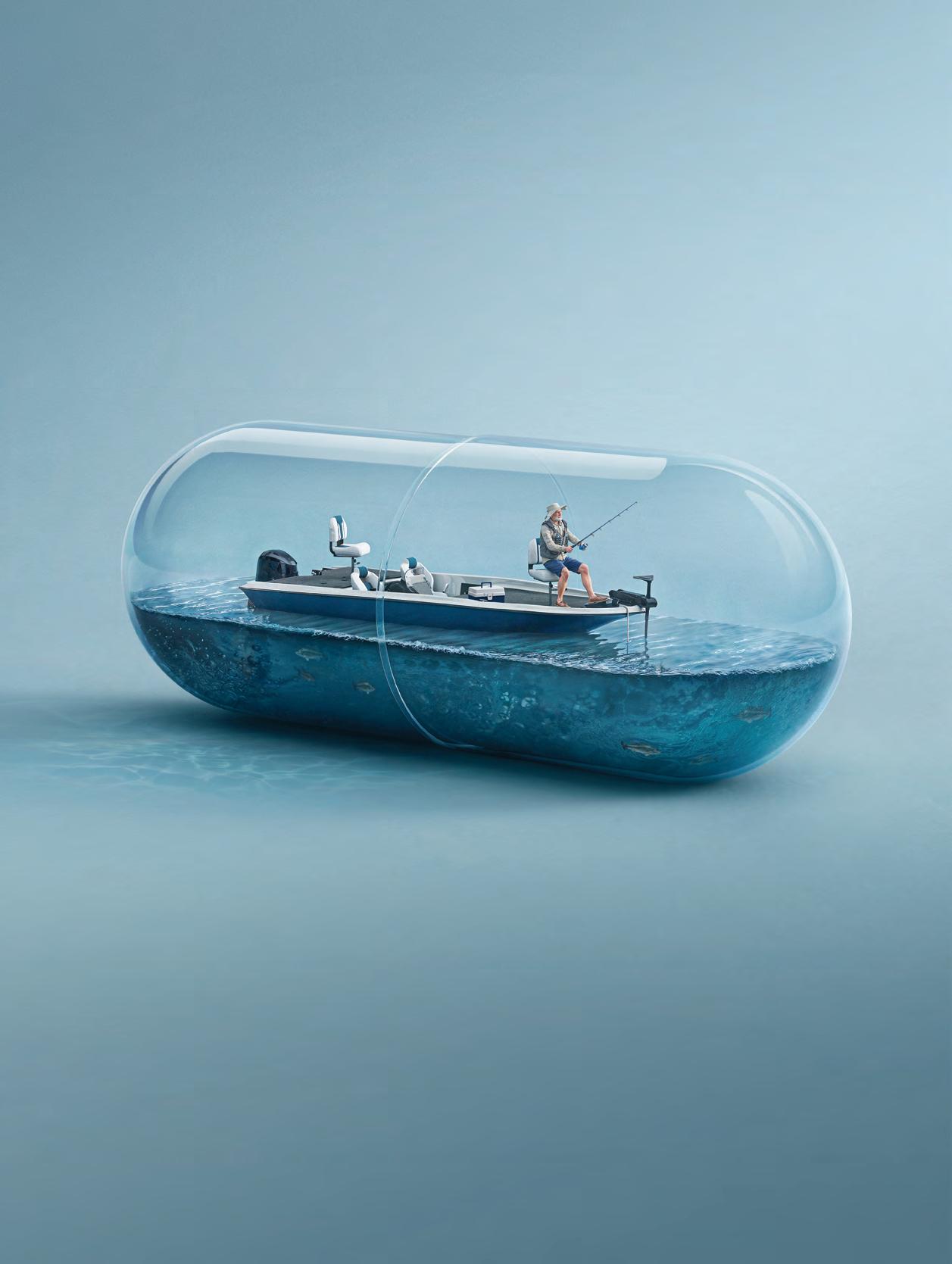
















By Ben Martin, Editor in Chief
The non-pro!t Protect Our Waters reports that, “Fish stocking has been a vital tool for maintaining healthy !sh populations in America’s lakes, rivers, and reservoirs. However, in recent years, most of our waterways have su ered from declining !sh stocks due to habitat destruction, over!shing, pollution, and climate change. If we’re going to combat these challenges, we’re going to need to ramp up our !sh stocking e orts to ensure the sustainability of recreational !shing, and food security.”
Fishing is one of America’s most popular outdoor activities, with millions of anglers heading to the water each year. e recreational !shing industry contributes over $125 billion to the economy annually and supports nearly a million jobs. Unfortunately, declining !sh populations threaten our industry, leading to fewer opportunities for anglers and reduced economic bene!ts for communities that rely on !shing tourism.

but also sustains the businesses like as bait shops, tackle manufacturers, and guide services that depend on a thriving !shery. Additionally, if we’re going to
can lead to an imbalance in the food chain. Stocking e orts can help restore native species in waters where they have declined, preventing the dominance of invasive species that may outcompete them.
While recreational !shing is the primary focus of most stocking programs, increased stocking can also support food security. Stocked !sh provide a renewable source of protein for both commercial !sheries and subsistence anglers.
Enhanced !sh stocking e orts can help mitigate the negative impacts that we’re seeing by introducing hybrid climate-resilient strains of !sh, e technology is there, we just have to use it. Without proactive stocking and conservation e of our favorite species of dramatic declines in the coming decades.
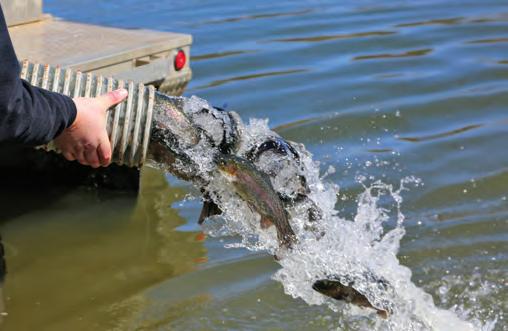
By increasing !sh stocking e orts, states could easily replenish popular game !sh species like red!sh, $ounder bass, trout, walleye, and crappie, ensuring that anglers have plenty of !sh to catch. is not only keeps !shing enthusiasts engaged
encourage a younger generation of anglers to be passionate about this wonderful pastime, they’ve gotta be able to catch !sh.
Many ecosystems are under constant pressure from habitat degradation, invasive species, and pollution. In some cases, native !sh populations struggle to maintain healthy numbers, which

America’s !sh stocking programs could and should play a critical role in maintaining healthy !sh populations, supporting the economy, preserving ecosystems, and enhancing food security. With increasing environmental and economic pressures threatening it’s time for a signi!cant investment in stocking e orts. By expanding hatcheries, improving stocking strategies, and integrating habitat conservation e orts, America can ensure that its waters remain abundant with !sh for generations to come.
Protect Our Waters is an angler-sponsored, nonpro!t organization with it’s primary focus on the sustainability and enhancement of recreational !shing. Learn more at ProtectOurWaters.com.








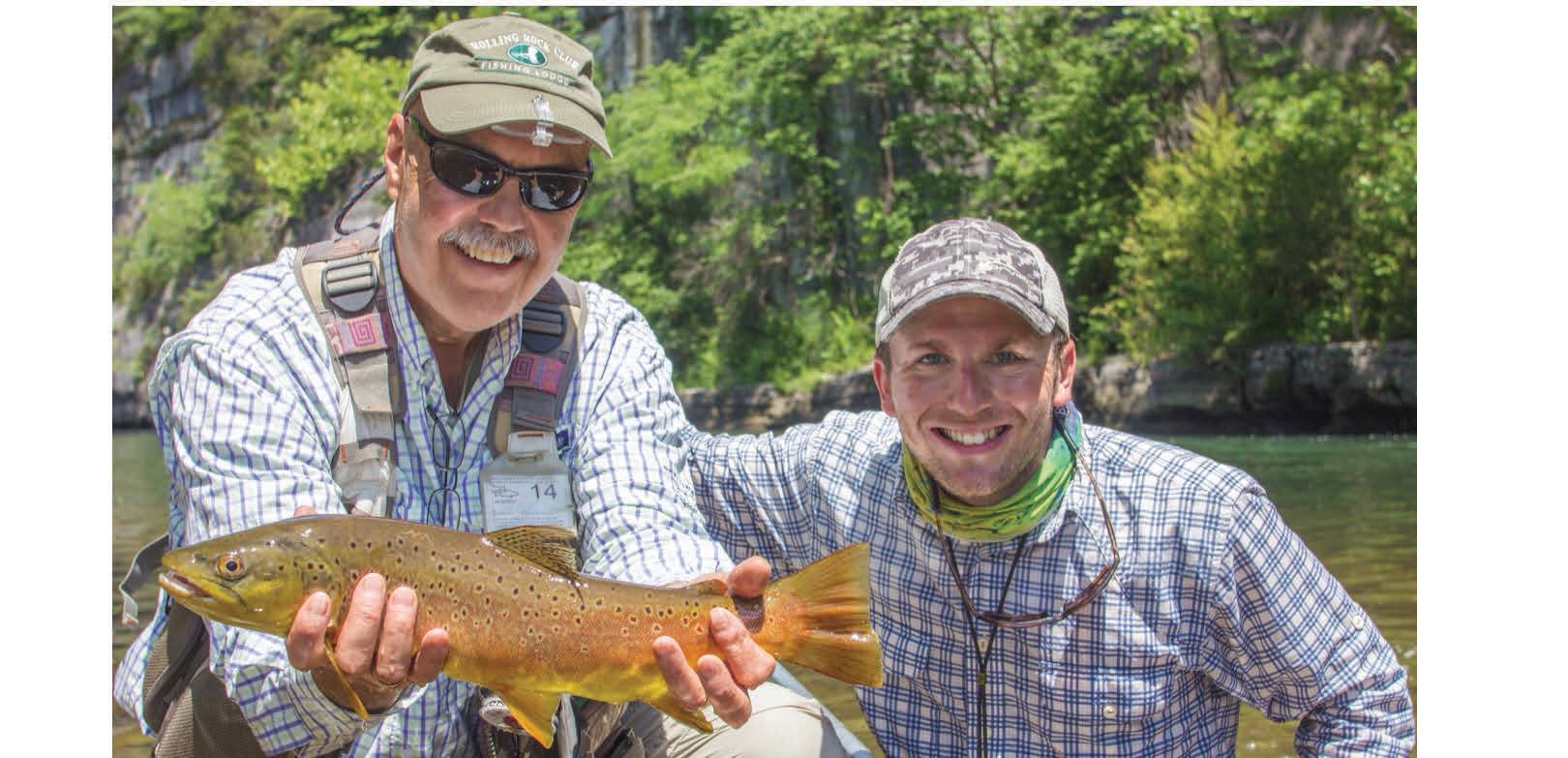




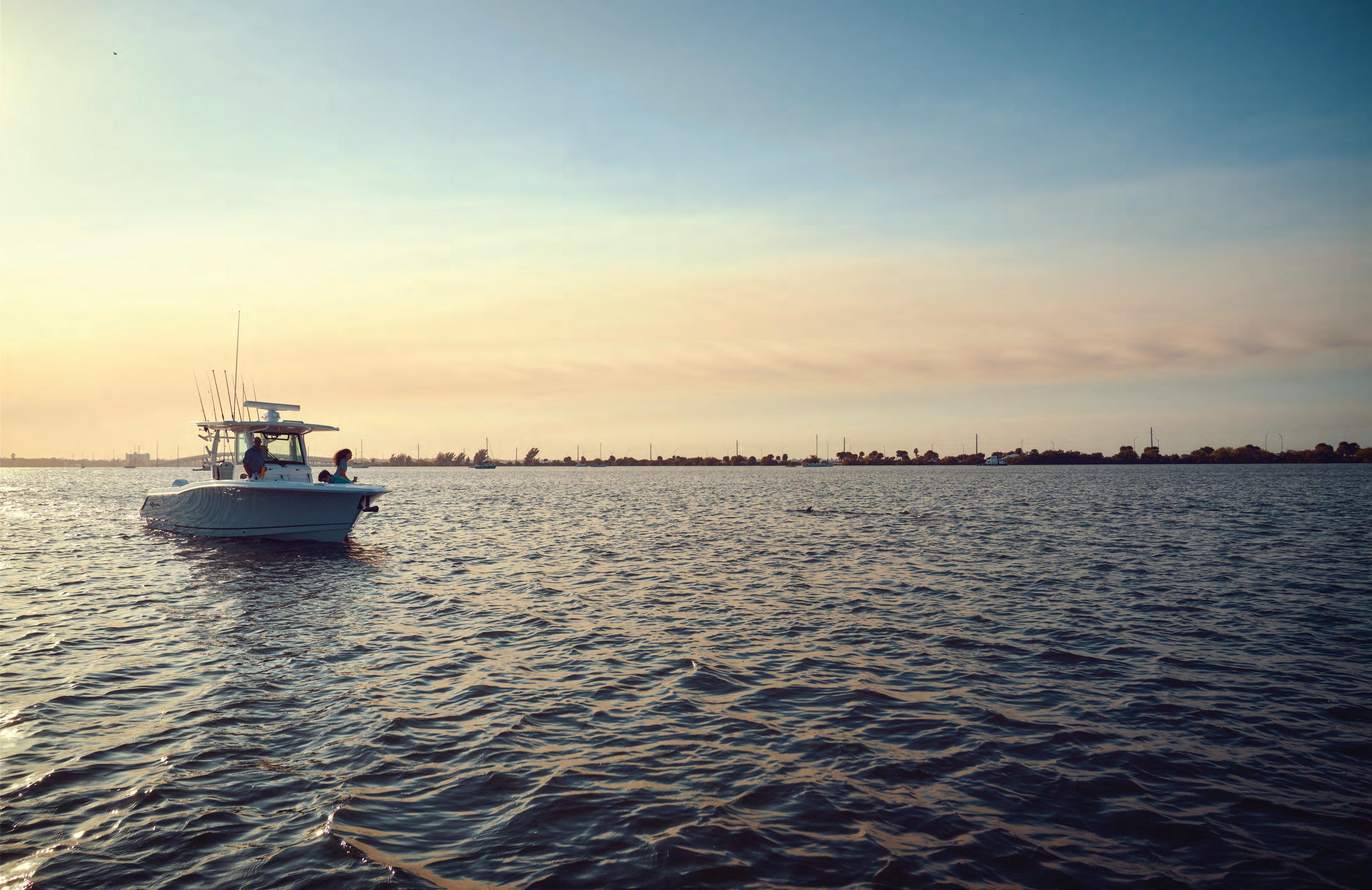
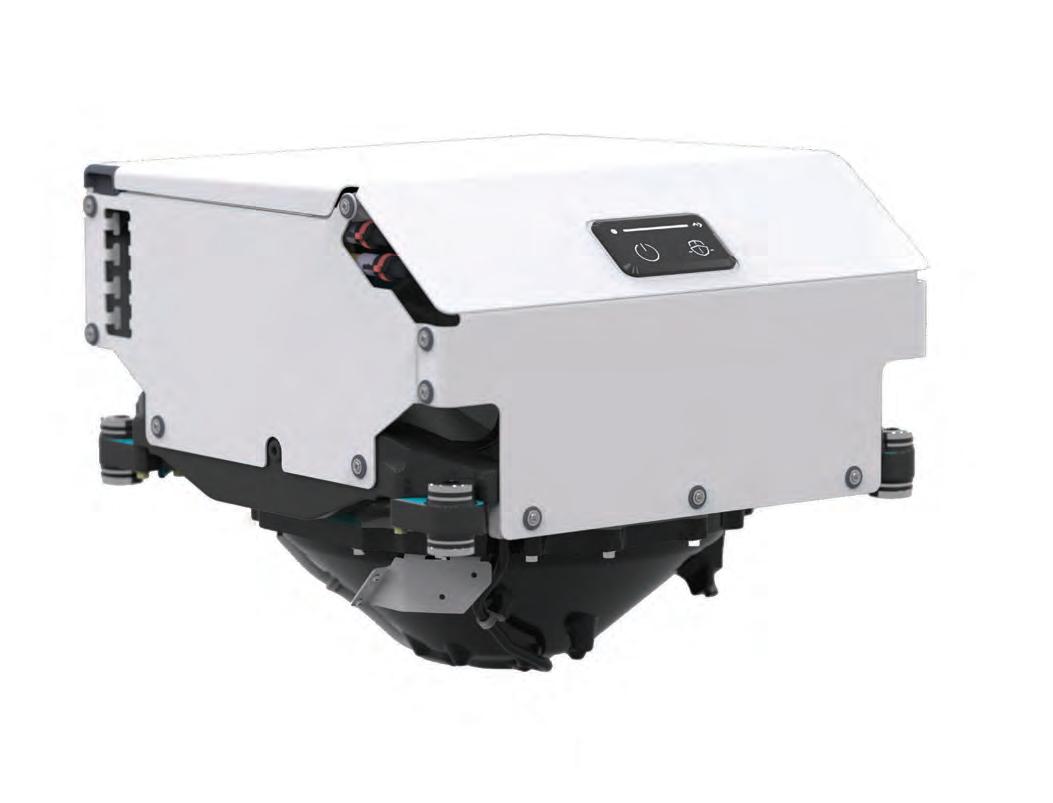



There are many reasons why the beautiful, deep-water queen snapper has made its way to the top of many anglers’ bucket lists. Not only is this !sh unique and stunning in appearance, but the quality of !llets it produces tops the scale of other snappers.
Most !sh that are harvested from the deeper, cooler waters, as with queen snapper, tend to yield higher quality table-fare. With the thick white meat on these !sh, that can grow over twenty pounds, targeting this species is a foodie’s delight.
Queen snapper can be found from 400 to 1,600 feet of water, spawning year round, with schools constantly on the move. Although they can be targeted over ledges and deep-sea coral beds within these depths, it’s not common to catch one as bycatch while not speci!cally intending to target them. As with most !sh with a penchant for these depths, research is scarce, with !shermen providing the majority of information on their observed behavior. at being said, targeting this species will be more productive with an experienced guide, rather than going it alone and winging it.
If you are a part of the DIY deep-dropping explorers club, and looking to add queen snapper to your hunt, you’re probably going to want to make a few di erent rigs for them.
An electric reel setup is recommended for this type of !shing. Not only due to the depths you are trying to reach, but you may only get short
By Capt. Quinlyn Haddon
dri%s over where you need to be before its time to reset.
e standard drop LEDs and lights should be used the same as with other deep-drop methods. Utilizing a heavy mono!lament leader line of approximately 300 pounds, a x your !ve drop lines at varying distances from each other. You may !nd you get bites higher up in the water column on certain days, making an extremely long leader more productive in !nding the !sh, especially on a !rst dri%. e drop lines should be decorated with your choice of glowing fandangles, whether it be glow wraps, rubber squids or the simple glow beads. Circle hooks ranging from 7/0 to 10/0 are e ective, and if you choose to put a variety of sizes on a single rig, the larger hooks should be at the bottom of the line.

this type of !shing is new to you, pepper in a few chunks of skin-on bonita in your presentation.
If you happen upon your queen snapper territory and !nd yourself in conditions without much current, you can also attempt to catch them with a heavy slow pitch jig. As long as you have light braid and a heavy jig to get to the bottom, and the energy and tenacity to retrieve it again, this is a productive method in extremely light current.
Once you start catching !sh, you may !nd they are consistently eating the bottom hook or the top hook, you can then play around with switching your rig to a longer or shorter leader.
e ideal go-to bait for queens is squid, but since this is a so%er bait, its easier to miss the bite. If
Queen snapper can be found deep in the gulf, and in the Atlantic from North Carolina to Brazil. While they have hot spots in the Bahamas and deep within the Gulf, e Atlantic waters of e Florida Keys o ers the best opportunity to target these within the United States and with the most minimal travel time. With mahi season around the corner in the Florida Keys, this is a great time to start heading o shore for queen snapper, as it provides a chance to target mahi to and from the deep-drop spots. Give me a call to get out there!
Capt. Quinlyn Haddon guides with Sweet E’Nuf Charters out of Marathon, e Florida Keys. (504) 920-6342. www.captainquinlyn.com; IG: @captainquinlyn


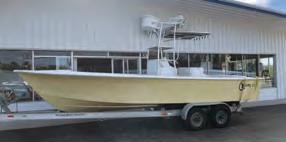
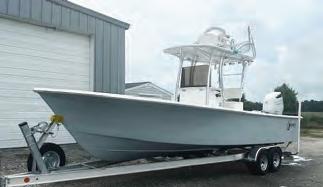




For anyone looking to build the best rod you’ll ever !sh, All-In-One Rod Building Kits from Mud Hole Custom Tackle are the ideal starting point. All-In-One kits take all the guesswork out of building a !shing rod, making it easy and enjoyable. Whether casting, spinning, y, or even ice, Mud Hole has everything you need for the perfect performance !shing rod and to start a lifetime of custom building.
Mud Hole’s All-In-One Rod Building Kits make it simple. Each kit includes everything you need—rod blank, guides, reel seat, grips, thread, and even the tools and supplies for assembly. With everything already preselected and packaged together, beginners don’t have to worry about picking out matching components and determining which supplies and tools are needed—all the work has been done by their professional builders.
Plus, Mud Hole provides all of the instruction required to build your !rst !shing rod. Kits include an easy-to-follow instruction book, and Mud Hole is the world’s largest source of free online rod building education material and content. ere’s nothing like catching a !sh on a rod you built. And All-In-One Rod Building Kits from Mud Hole Custom Tackle are the perfect way to get started in this time-honored cra$.
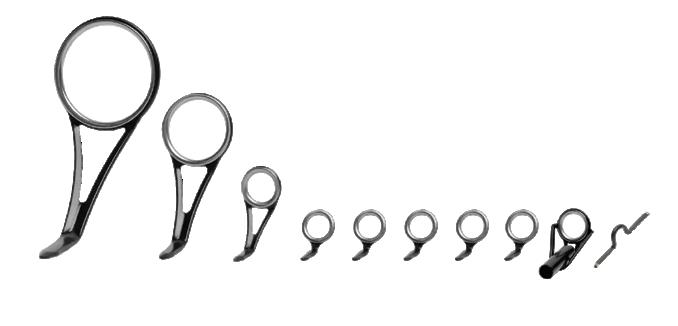
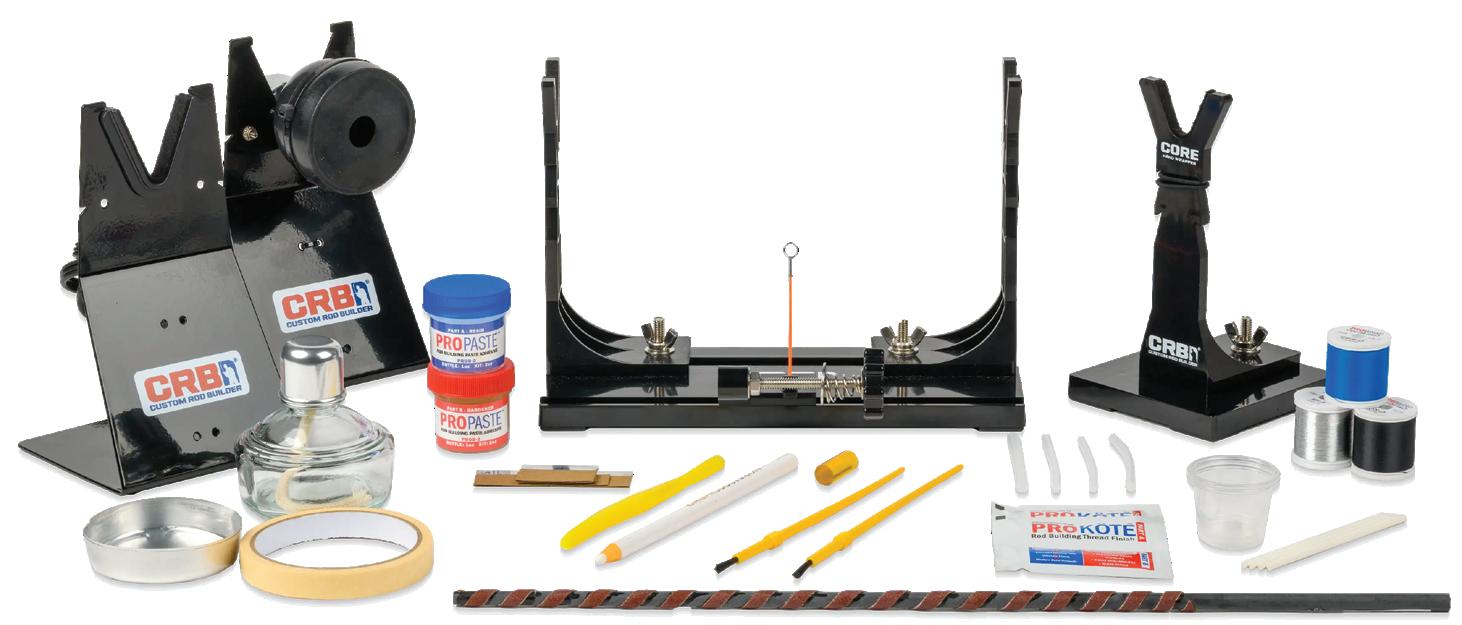


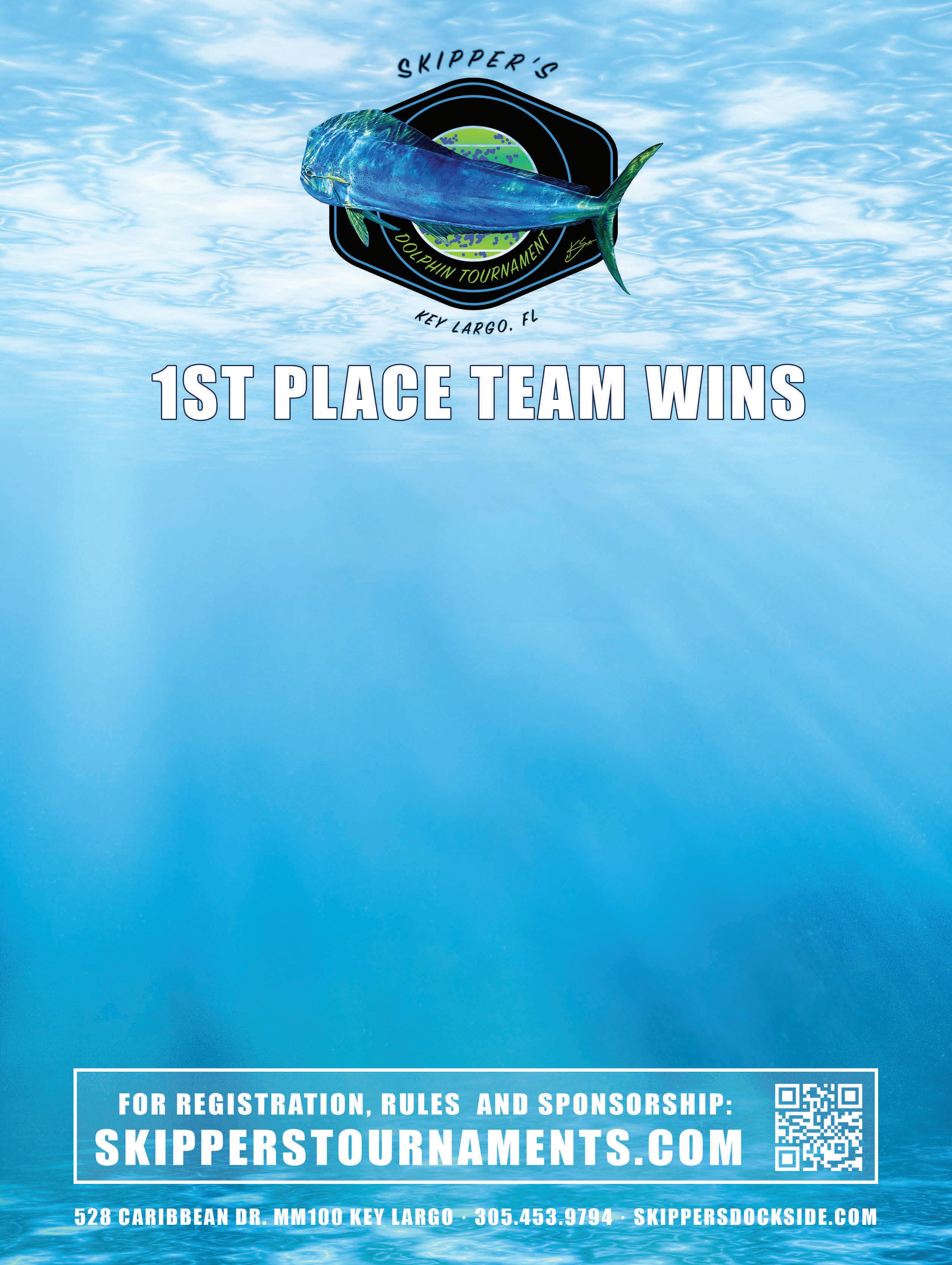
Performance Bulletin Available
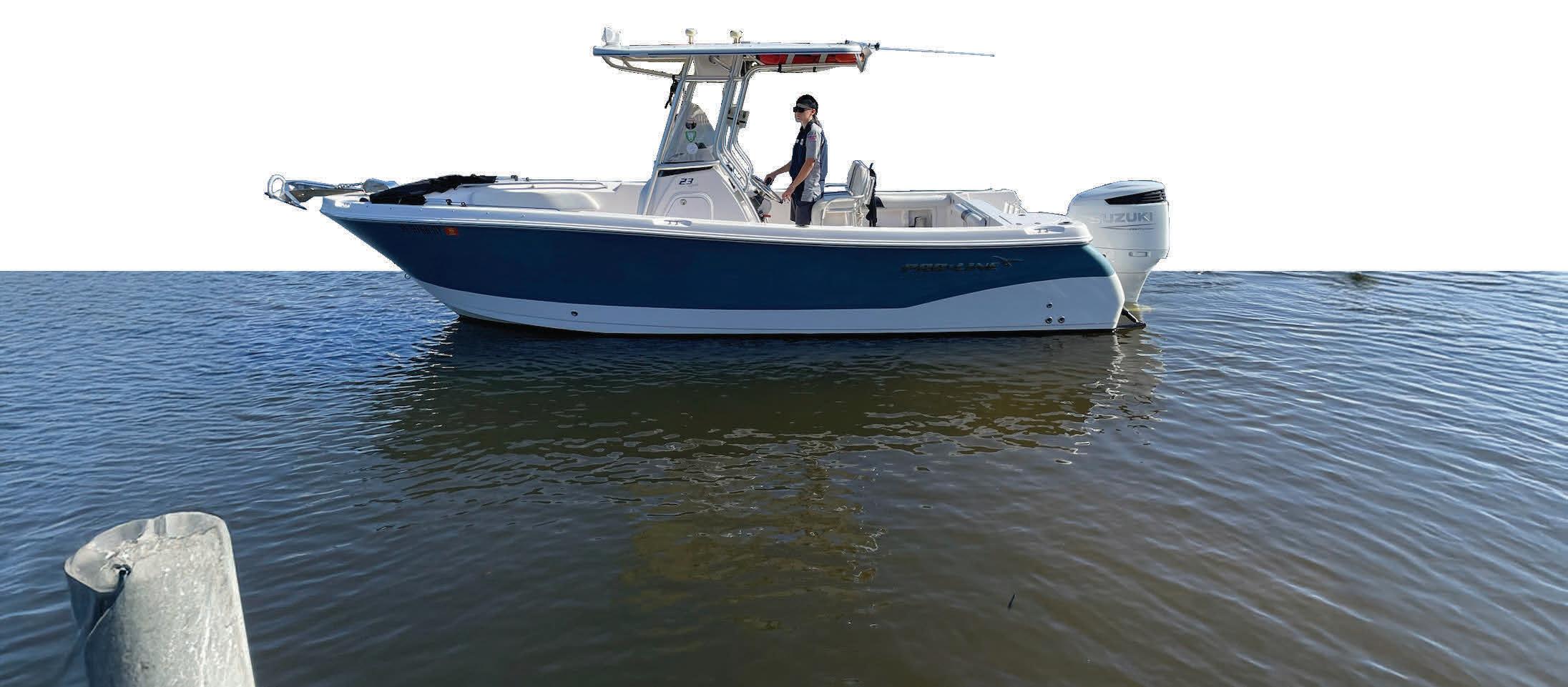
Repower






The weather is warming, and the winterchallenged !shermen are pulling their boats out of storage. is undoubtedly will lead to more tra#c on the water. With the added tra#c and high southern winds, this is a perfect time for me to avoid both by swapping the kayak for the boat for a few weeks and going deep into the marsh.
Springs’ rising tides will $ood new water over the once-dry marsh, encouraging more !sh to explore the new terrain in a quest for a good meal. Little do they know, I will be waiting there with my trustworthy rattling paddle tail.
Red!sh will be my primary target since I spent the winter targeting trophy trout. As always, bait will be the key to a successful outing. Since the size of the bait will be small, I like to have two characteristics in my lure. ey are small, roughly 3”, and have a clear sparkling color. is helps produce in most situations because the bait is tiny, maybe smaller than my lure. at is why I like the transparent re$ective colors; they disguise the lure’s size, making it appear smaller.
I like to work irregular shorelines since they have more areas for the bait to hide. I also feel it slows the reds down. When they have a straight shore, they tend to cover more water rather than hang around, allowing you more opportunities. If the water is o -color, I like to add a popping
cork rather than changing color. Known for their e ectiveness when using live shrimp, popping corks also improve the performance of so plastics. Depending on the situation and preference, these can be used on a jig head, weedless weighted hook, or with just a hook. When choosing a popping cork, I like a deep cup, which is hard to !nd on most corks in today’s market, but there are a few. Most manufacturers went away from the actual reason for the name, popping. e original, and a few out there today, still have the deep concave top, which produces the slurping sound and splash mimicking a !sh feeding on the surface. I !nd that sound is what attracts the !sh more than a clack. I’ll dedicate an entire article to cork !shing and the many ways to use them soon. While targeting reds, use a stout hook on your jig head. A hook you can $ex with your !nger is better suited for trout than reds. is is not where you want to skimp on quality. Not only do the hooks need to stand up to the hookset into the thick skin of a red, but they also need to hold up to the torque of removing the hook from the their jaw. I see many hooks get destroyed at this point. ank you for reading my words and don’t forget to take a kid !shing! e time is right.
By Capt. Michael Okruhlik



Spring !shing is one of the most exciting times of the year. As water temperatures rise, !sh become more active, making live bait one of the best ways to trigger bites. A bait pen—a oating or submerged enclosure for keeping bait!sh alive— can be a game-changer for any angler.
One major advantage of a bait pen is ensuring a steady supply of live bait. Instead of relying on bait shops or spending time catching bait before each trip, you can stockpile bait in advance. #is allows you to head straight to your !shing spot with fresh, lively bait ready to go.
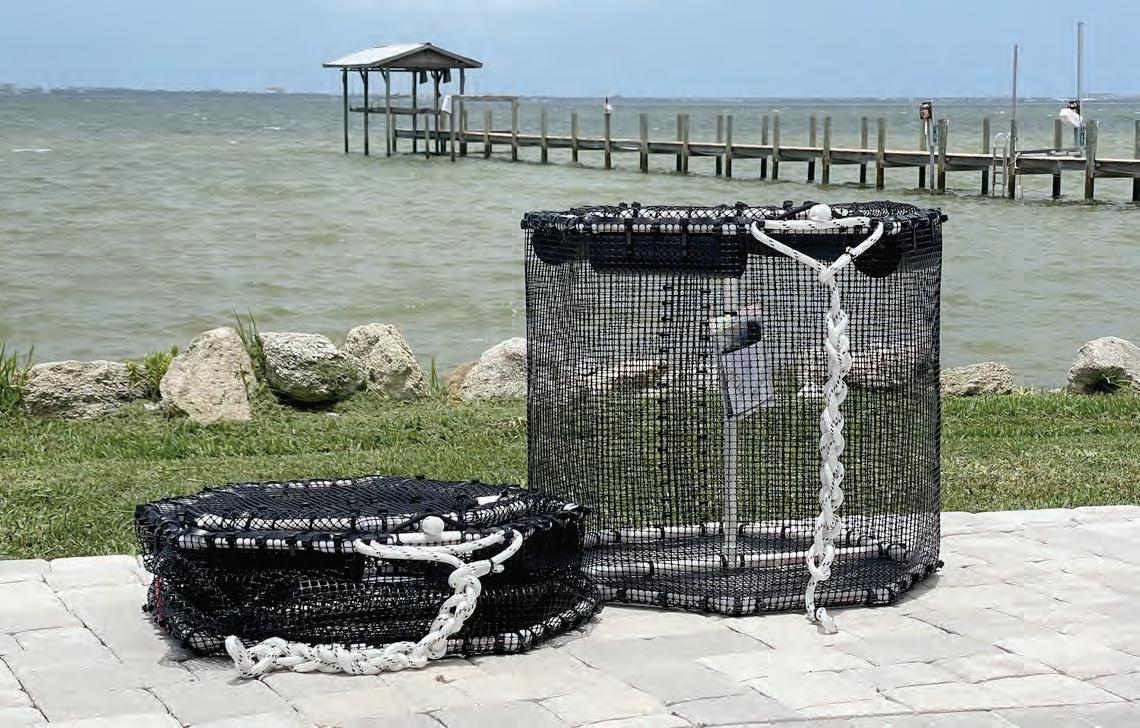
A bait pen also saves time and money. Buying live bait regularly can be expensive, especially during peak !shing season when demand is high. Catching fresh bait every time you !sh also takes up valuable time. By storing bait in a pen, you reduce costs and eliminate the hassle of searching for bait before every outing.
Healthy bait is crucial for successful !shing, and a bait pen helps keep bait!sh strong and active. With proper water ow and oxygen levels, bait stays in peak condition for days or even weeks. #is means your bait will swim naturally and attract more strikes compared to weak or dying bait!sh.
Another key bene!t is exibility. Spring weather can be unpredictable, with sudden changes in wind and tide conditions. If a !shing trip gets postponed, a bait pen allows you to keep your bait alive until conditions improve. Instead of scrambling for fresh bait when the opportunity arises,
you’ll be ready to go at a moment’s notice.
Using a bait pen is also more sustainable. Instead of constantly netting fresh bait and impacting local !sh populations, you can responsibly store what you need and reduce unnecessary waste. #is helps preserve bait!sh stocks while still giving you an e$ective !shing strategy.
For tournament anglers and !shing guides, a bait pen is an essential tool. Having premium live bait ready before a trip provides a competitive edge and enhances client experiences. Instead of spending time chasing bait, anglers can focus on putting more !sh in the boat.
A bait pen is a simple but invaluable tool for any serious angler. It ensures you always have quality live bait on hand, saves time and money, and provides exibility for unpredictable !shing conditions. Whether you !sh recreationally or professionally, investing in a bait pen will make your trips more e cient and successful.
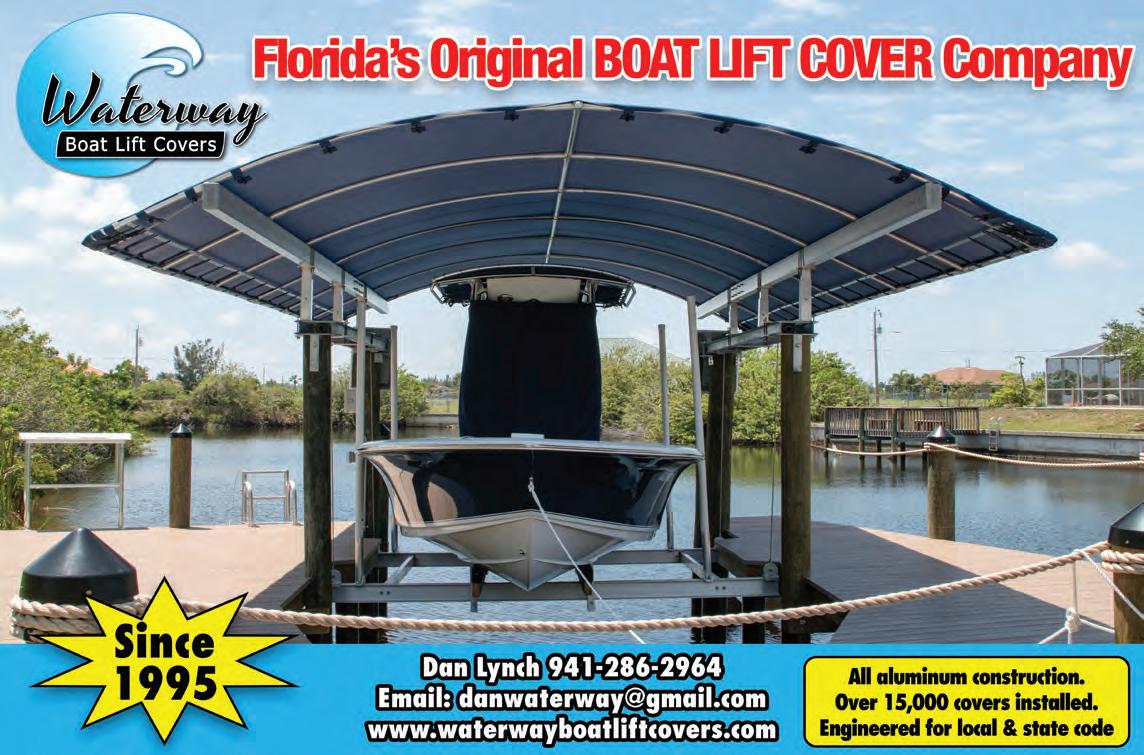
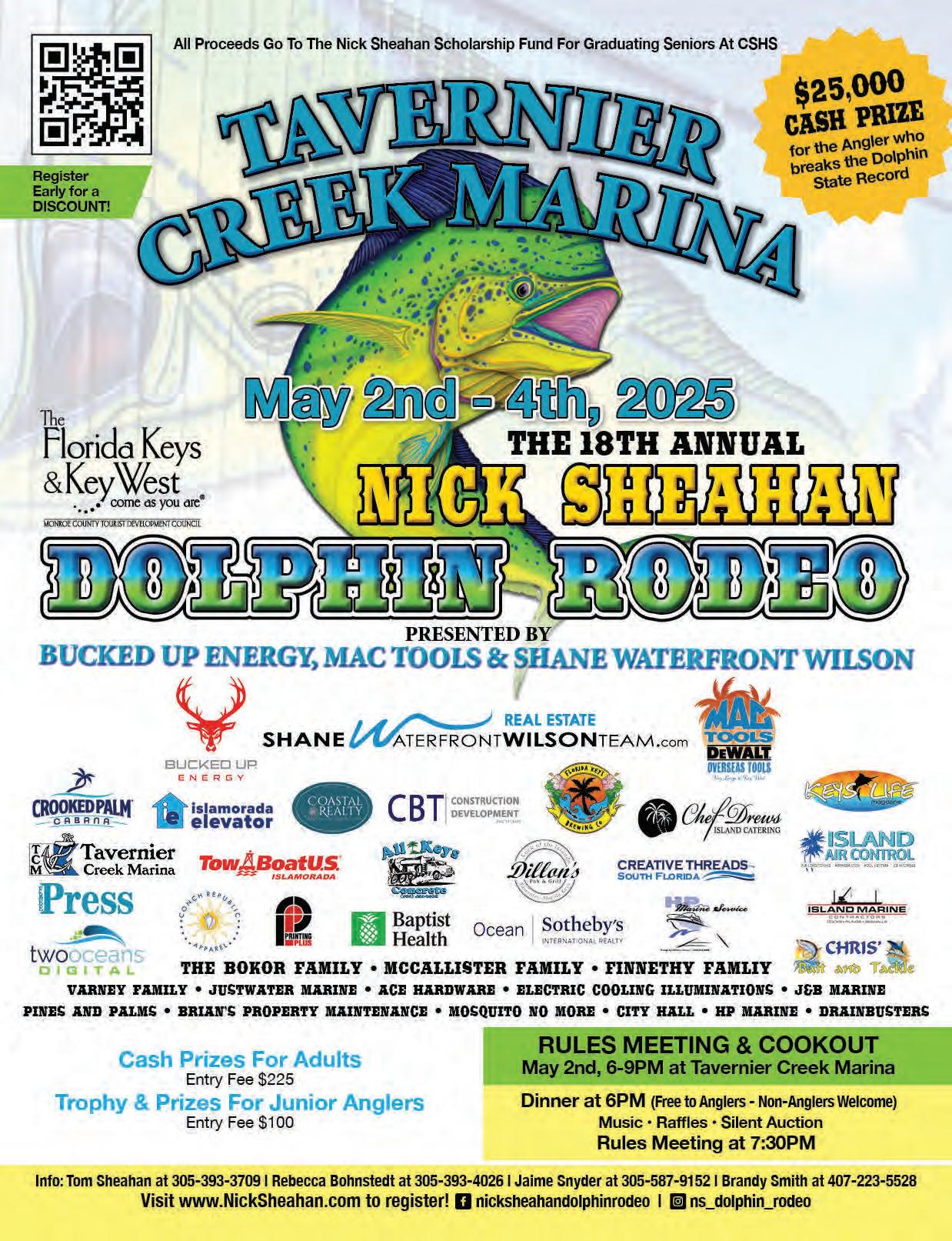


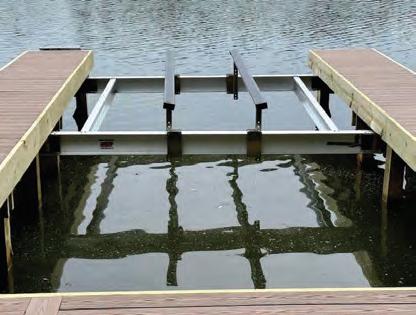
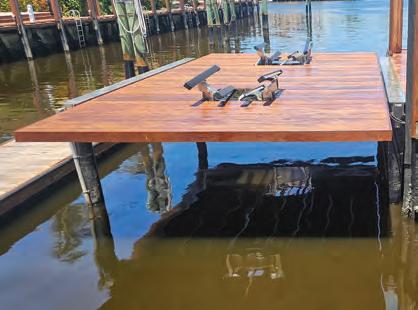
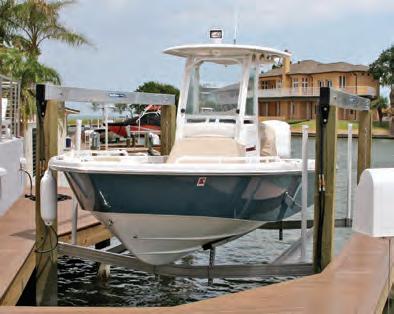


ShoreStation hydraulic boat lifts are a reliable choice for coastal residents and boating enthusiasts alike. Their strong construction, made with corrosion-resistant materials, allows them to withstand harsh environmental conditions, including sun, storms, and saltwater damage. ShoreStation provides a steadfast solution for protecting waterfront investments, o ering peace of mind to owners in the Sunshine State.


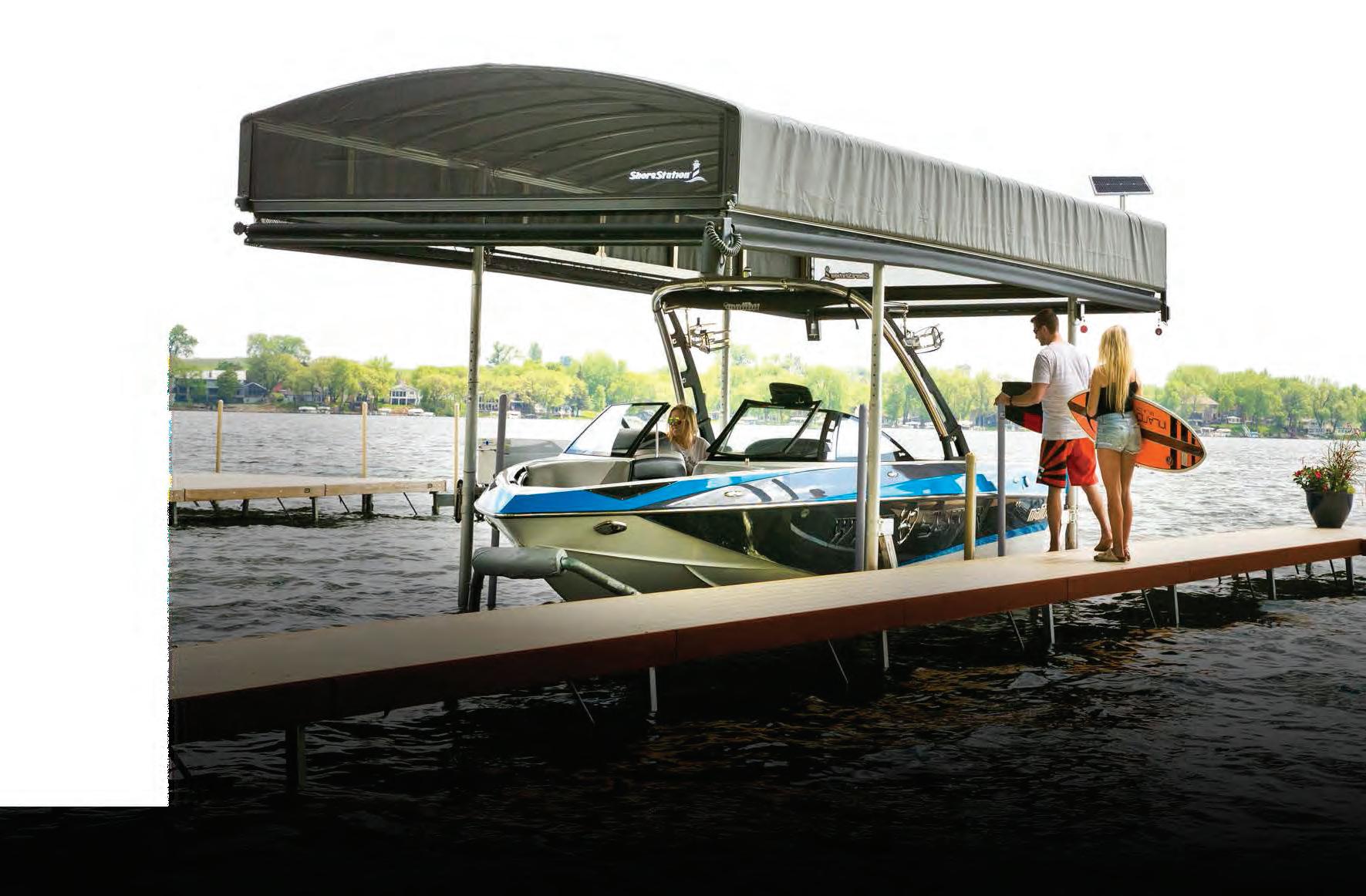

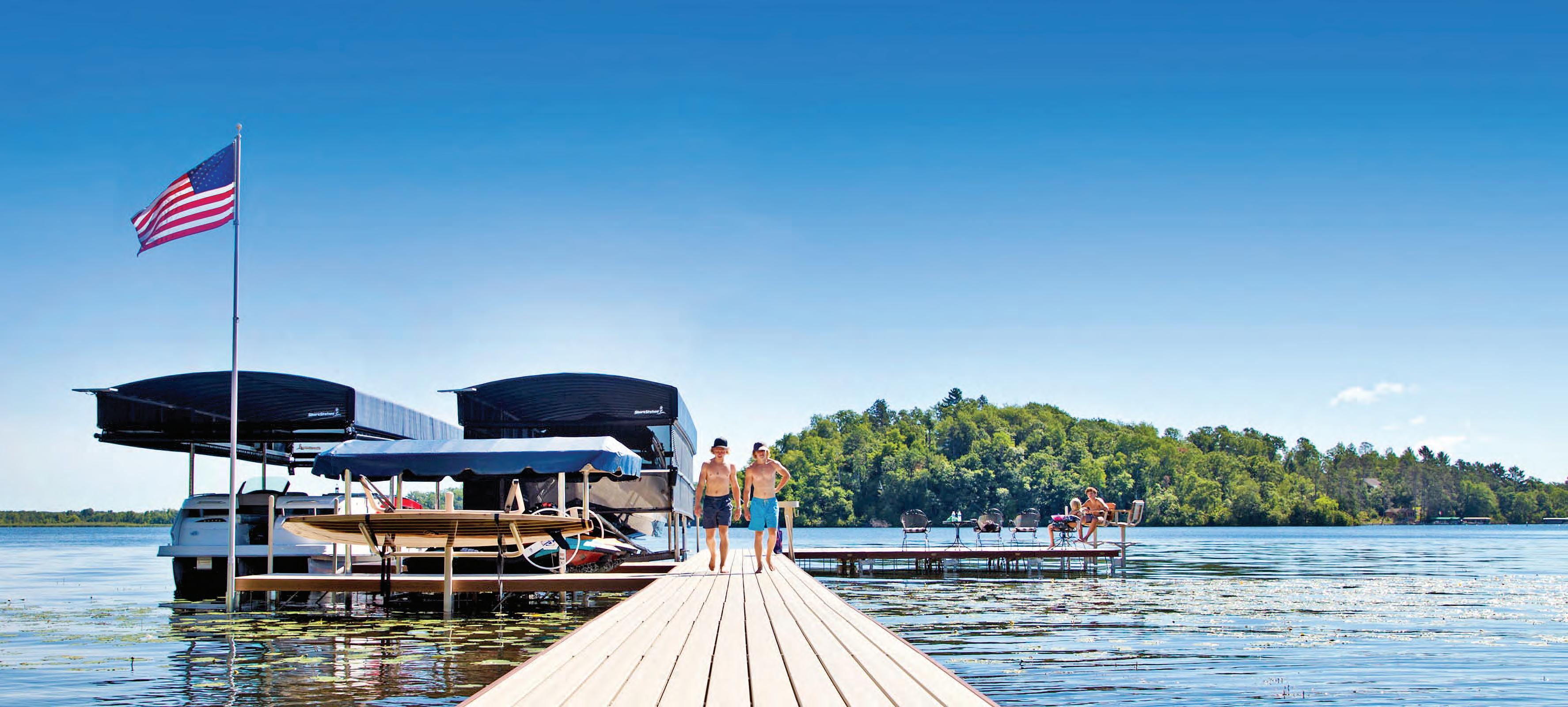

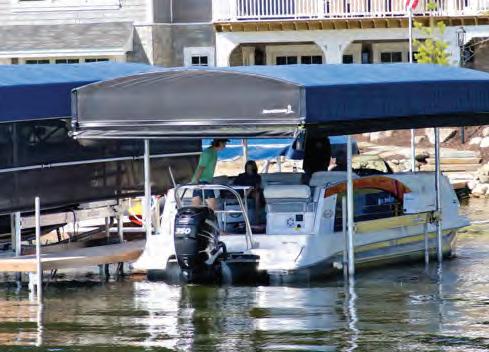
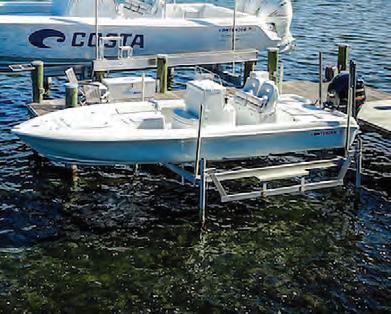
Equipped with exceptional weather resistant fabric and breathable SunTex 80 woven mesh ends for maximum protection and durability,

Made from the highest quality materials, our innovative hydraulic boat lift is one of the fastest and safest lifts on the market today. When you have a hydraulic lift, there’s no need to worry about wind and waves getting in your way. This lift will give you con dence to safely land and secure your boat in less-than-ideal conditions.
Never miss another moment on the water. Power your lift with clean, free solar power. Our speedy 20 watt charger features solar regulator drainage protection, saving your battery from permanent damage caused by overcharging.



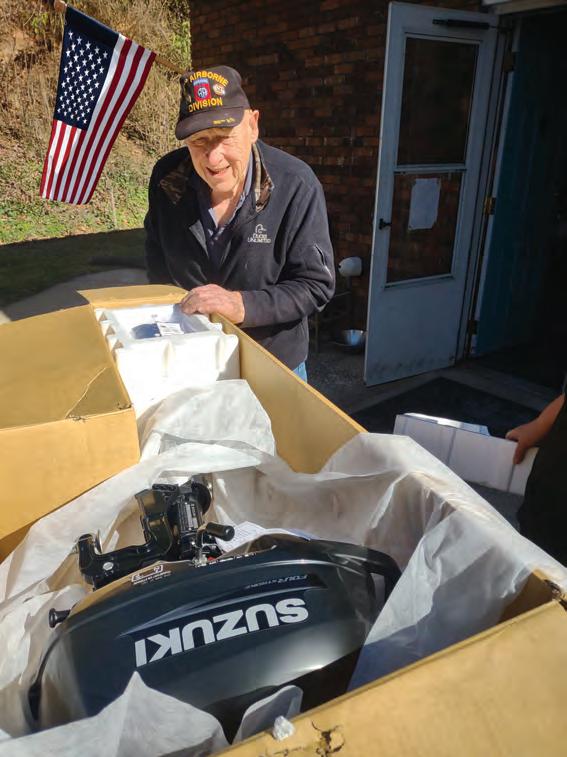
For more information on future contests, visit
We’ve all heard it, and most of us have said it at one time or another, but on March 3rd, 2025 George Poemer of Robbinsville, NC, received his Coastal Angler Magazine contest prize: a brand new Suzuki Marine DF2.5 Portable Outboard Motor! Now, at least one of us out there can never say, “ I never win anything,” again. Congratulations to George for being chosen the winner, and a special shout out to our friends at Suzuki for making this really cool contest possible. www.coastalanglermag.com



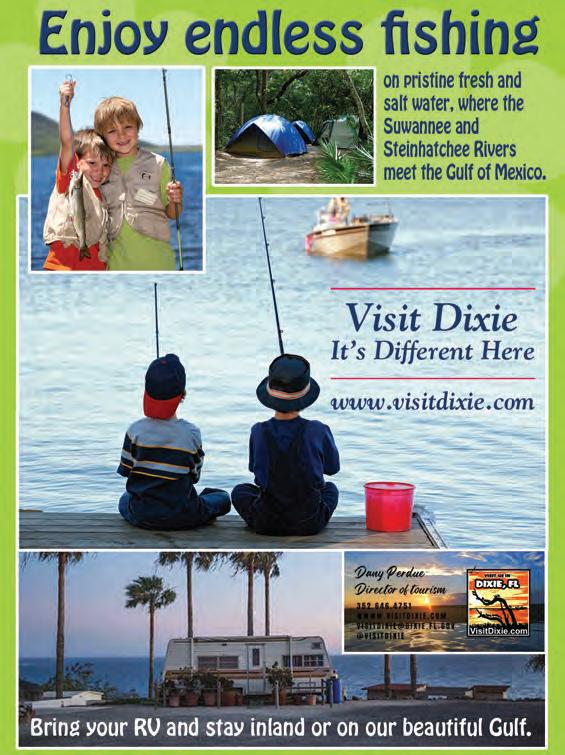
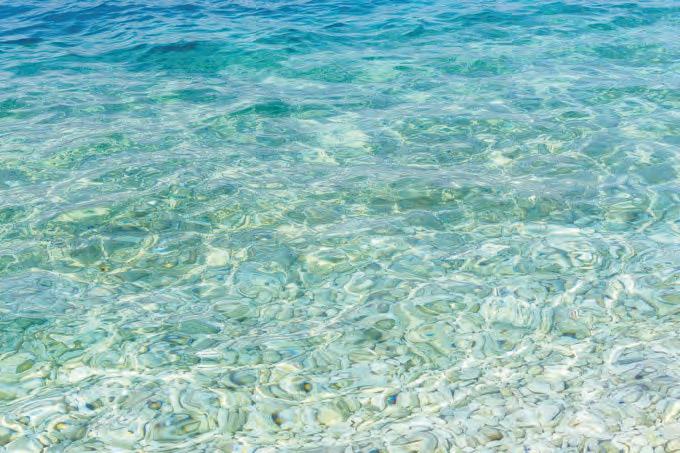




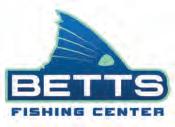


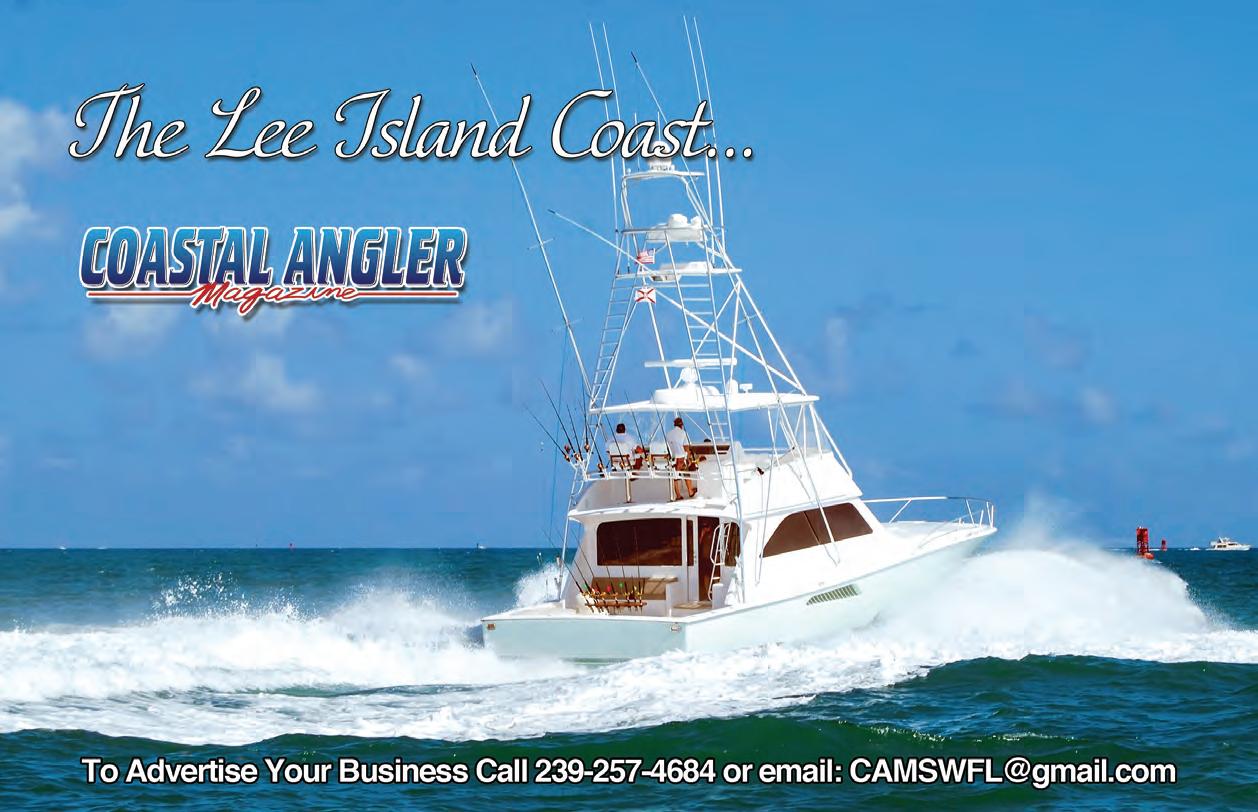
By: Jessica Hendrie

Bass fishing isn’t just about the catch, it’s about the moments in between. It’s in the slow and quiet mornings when the world is calm and cool and the connection to something bigger than ourselves. As we cast our lines in hopes of a big bass, we’re reminded that life, much like fishing, is a series of beautiful moments. Each one as precious as the last. So, with that being said, when’s the last time you went bass fishing? It sure takes a special skill to lure them out for that big slam. My family and I spend a few days every month bass fishing at our favorite spots. It’s the ultimate kind of fishing to start kiddos on to get them certainly hooked. We went last weekend and had the best time. We caught a few fish but two of them were so big! That’s the beauty of bass fishing, the small ones are just as fun as the big ones and it’s usually a mix of them all. You may even have a little bycatch such as a gar, bluegill or catfish but all just as fun. If you get lucky, you can even take a few home to fry up for a yummy bass dinner. I grew up fishing with my dad and taking home the fish to my mom who would fry the bass and make hush puppies, cheese grits, baked beans and cornbread to go with it. A southern delegacy to say the least. Now that I’m grown, my son gets to experience all these fun things and fun foods now, too. He may even tell you that his favorite food are bass nuggets. I also get to show my husband a few fun traditions that my parents and grandparents passed on to me when it comes to fishing. There will always be a place in my heart for fishing and I always have my family to thank for that, especially my dad and grandpa. I challenge you to go catch a bass or two and feed your family with it. You won’t be disappointed! Happy fishing!
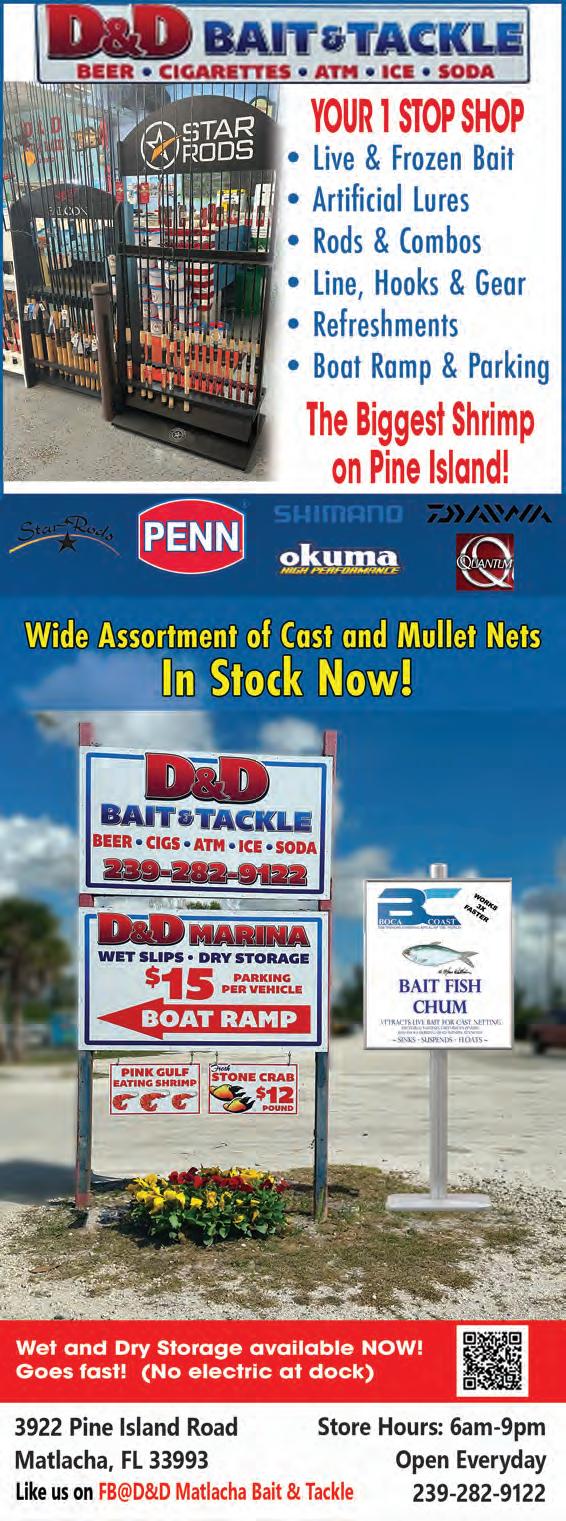
By: Capt. Bart Marx

We are warming up in Southwest Florida and as the bait starts to migrate north so do the kings and spanish mackerel. The white baits start to come inshore and become easier to find, and the big schools of tarpon may show up. The tarpon are bait fish to some other species better known as the tax collector in the grey suits! That would be the sharks that think tarpon are very tasty and plentiful in our area this time of year, and this action runs up and down the coast from Marco to Tampa. Tarpon are a lot of fun to hook into and get a few jumps for the sport of it, however, they are not good for eating. Growing up in Southwest Florida, I was taught to spend time fishing for fish that are edible, and that is mostly what I do today. I enjoy a blacktip shark that is between 3-4 foot long, and there are the bonnet head sharks they don't get much bigger than three feet and there is a good amount of meat on them. I also target snapper, lanes, mangroves and yellow tails, which can be found this time of year in 40 to 80 feet of water. Artificial reefs and wrecks hold the mangrove and yellow tails. When anchored, you usually can chum the snappers up to the surface and just use a hook on your line and a piece of bait.
If you don't have the means to travel out into the deeper waters, there is plenty of action close to and inshore, as there should be plenty of snook as they prepare to migrate and spawn. Snook travel relative to where they live. Snook in the river go into the harbor where there is the proper amount of salt for them to reproduce, and the ones in the harbor travel to the beaches, and the ones around the beaches they travel out into the Gulf to 45 or 50 feet of water on reefs and ledges. I learned this information when I was teaching a class. A snook biologist would come and talk with the class and I was able to ask questions and gather some good information, which I share with fellow anglers. Trout, pompano, and reds will be hunting along the mangroves and out on the grass flats, and the reds may even hideout in the sand holes in the edges of the grass waiting for a snack to swim into range for food. If you are shark fishing, there may be the opportunity to catch a cobia, they roam the same areas as sharks. If you would like to come along with Capt. Bart Marx and learn some of these methods of harvesting fish, call 941-979-6517 or e-mail me at captbart@alphaomegacharters.com



By: Capt. Terry Fisher
Every year I remind anglers that the month of April is the beginning of the tarpon migration to Southwest Florida from Mexico via the Florida Straits. This sets the stage for one of the “Greatest Migration Shows on Earth”! This spectacular, natural display of God’s gift to anglers is one of the biggest tarpon migration on planet earth. Even though the migration starts early April and last through June, Boca Grande Pass is the epicenter during the month of May. Whether fisherman or not, this natural display of wild life beauty is worth a boat ride to the ‘Pass’, if only to experience. Each spring, thousands of these prehistoric fish make their appearance in the ‘Pass’ to mate, to replenish, to grow and survive the next generation.
Pr ior to this however, April tarpon will be found cruising northward and along the beaches. They are cruising the passes, such as Wiggins, Big Carlos, Redfish and Captiva Passes and numerous areas of Pine Island Sound. These fish are migrating in schools from the south and are feeding on various baits in their paths. Live/dead baits of choice include blue crab, mullet, pinfish, threadfin, pilchard, mackerel and catfish fillets. Effective techniques include weighted presentations on the seabed or under corks/floats. Use strong equipment, such as 60008000 series reels with at least 30-40lb. line rated rods. I use 65lb. rated test line and 60-80lb. rated leaders to do the job. Also, use 6/0-9/0 circle hooks.
Inshore fishing was good in March and should continue. With the higher tides, stronger currents and more bait fishes, fishing in April should prove to be excellent. Snook, redfish and seatrout are open to harvest and the excitement of targeting and landing these species will offer a tremendous amount of enjoyment together with memories of a lifetime. Practice makes perfect, so get out there, locate the fishing holes and when the harvests open, you will be ready to have a “fish fry” with your friends and family. Many times, it’s the hunt, not the kill that provide the better experiences and memories. I applaud the FWC for strictly managing the harvest quotas and seasons that protect all species. Especially, with all of the boats and anglers putting lots of pressure on our estuaries and offshore reefs.

Ex pect to catch seatrout, spanish mackerel, pompano, jack crevalle and ladyfish on the deeper grass flats in open waters. Snook should be plentiful in the passes, just off the beaches, around docks and mangrove islands as water levels begin to rise higher offering boater’s access to more fishing spots. Artificial presentations with paddle tails, spoons and top water will all produce. Live shrimp and bait fish will produce the most catches.
Redfish should be easier to locate on the high side of the tides in the shallows close to, in and around spoil islands as well as oyster shoals. A few sheepshead may still linger around seawalls, piles and docks while many will revert to reef structures offshore in deeper water as the water temperatures continue to rise. Black drum will be found around bridges and docks fed by currents from passes and channels.
Offshore will offer anglers more success than the winter months as migratory species such as, permit, cobia, blackfin and kingfish make their appearances in open water, but more so around reef structures. Decent size mangrove snapper and lane snapper should be plentiful in depths of 45 or more feet. Larger grouper and snapper will require a trek of about forty miles offshore to fish waters in 85110 feet. To make a fishing adventure of the latter, one should have a boat with at least a one hundred-fifty (150) mile fuel range, equipped with a VHF radio and other back up satellite communication system. Wind will dictate when and if one should go or not.
My charters produce a lot of fish both inshore and offshore. I do a lot of ‘Captain for Hire’ (by the hour) on both inshore and offshore vessels. Some of my catches are posted regularly on Facebook and Instagram by 1st Mate Vicki. I enjoy providing accounts of the charters along with stories of my clients and pictures of their catches. I love teaching people when, where and how to catch fish on my vessel or theirs. I actually mark the fishing spots and locations for them so that their future adventures are most always productive!














By: Joe Sheaffer
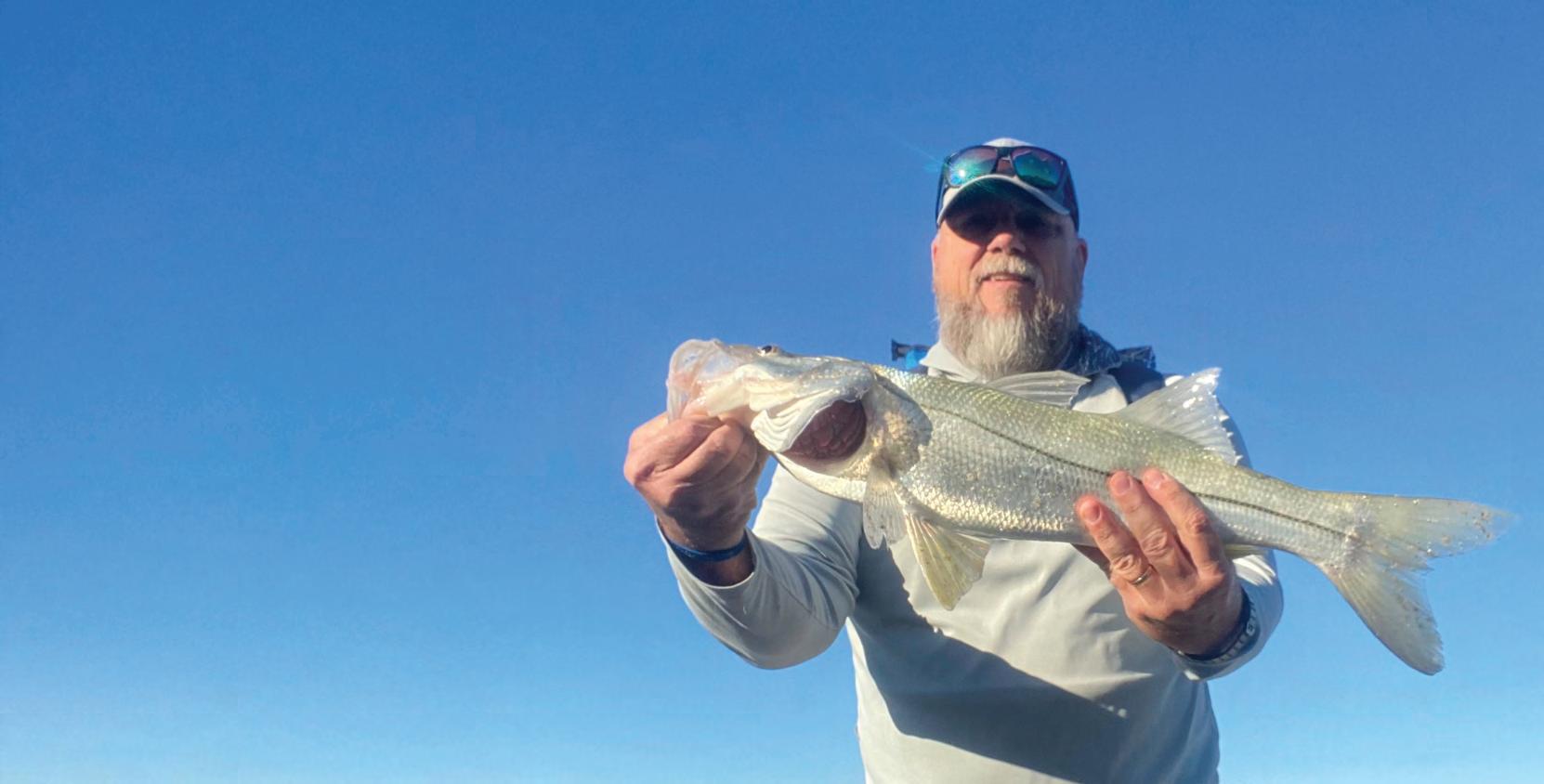
As Spring settles in, I love to head to the beaches for quick fishing trips. The weather is usually very nice, the water is warming and the gulf beaches can be great places to spend a few hours of fishing. Many species start their migrations along the gulf shore. The beaches become alive with bait pods, inshore species like Snook and Redfish start hanging around our beaches. Tarpon start heading to our passes, pelagic species swim along the beaches. Spending a few hours fishing along one of the many beautiful beaches in SWFL doesn’t need to be complicated. A few hours of time with minimal equipment can make for a great fishing adventure. I enjoy walking (Power Fishing) along the beach looking for different structures that may hold fish. Identifying these types of areas can definitely help in finding active fish. As I walk I’m looking for points, hard visible structures (man-made
or natural), blowouts or rips, sandbars close to the surf and deeper holes to name a few. I like a 7’6 medium heavy spinning rod. 2500-3000 spinning reel, spooled with 10-15 lb. braid. I usually will use a 25-30lb Fluorocarbon leader. I carry a small backpack with a selection of terminal tackle and a few different lures. Don’t forget water and sunscreen. I usually will have a jig tied on, ⅛ oz all wall up to1oz depending on the surf conditions. Paddle tails, swimbaits, bucktails are my preference but many other lure presentations can be very productive. I may walk 1 to 2 miles to find productive areas. Many times, I catch some really nice fish, many different species and occasionally a fish of a lifetime. Worst case I have spent a few hours on a beautiful day along the beach getting some needed exercise. Hopefully you can find some time this spring fishing at a nearby beach. Good luck and keep casting.






3
13
14
16
18
19
20
22 Tue 12:02P 1.2 10:15
25
26

































































20
21


































































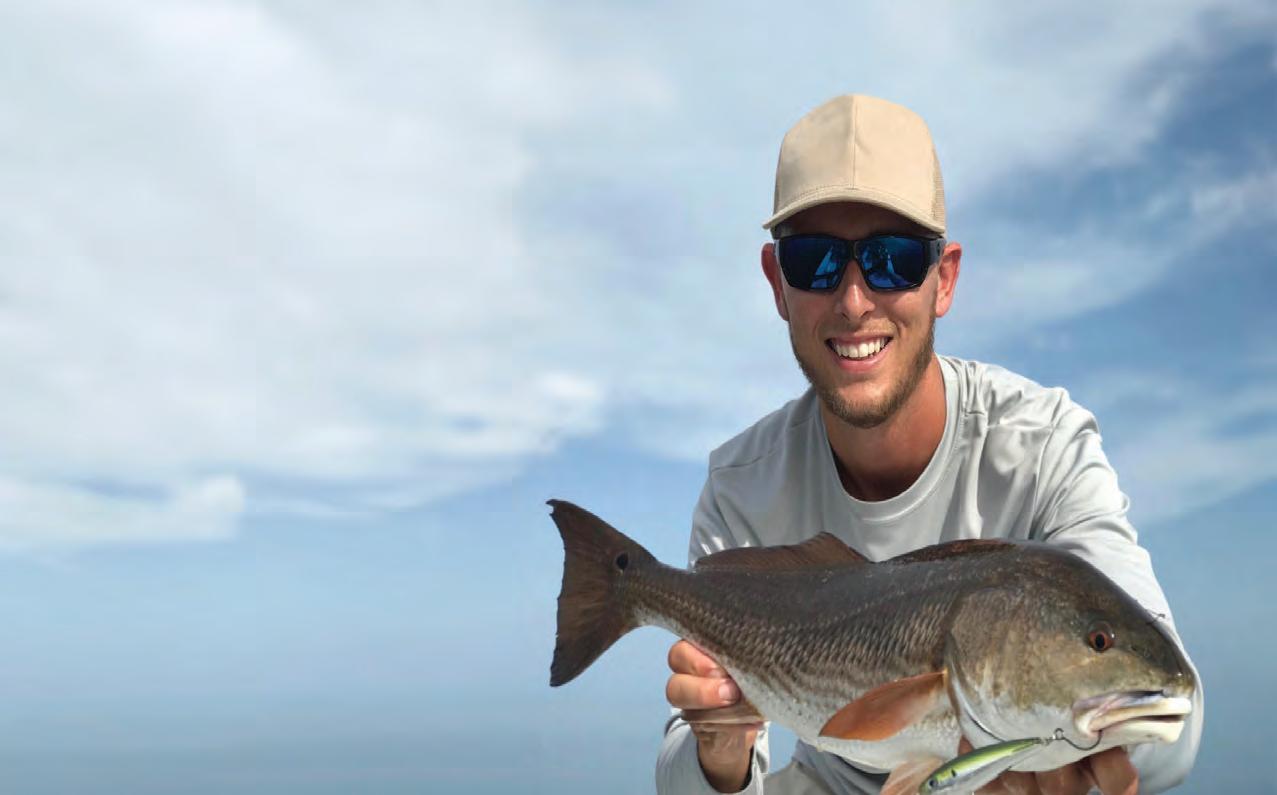

by Capt. Billy Norris
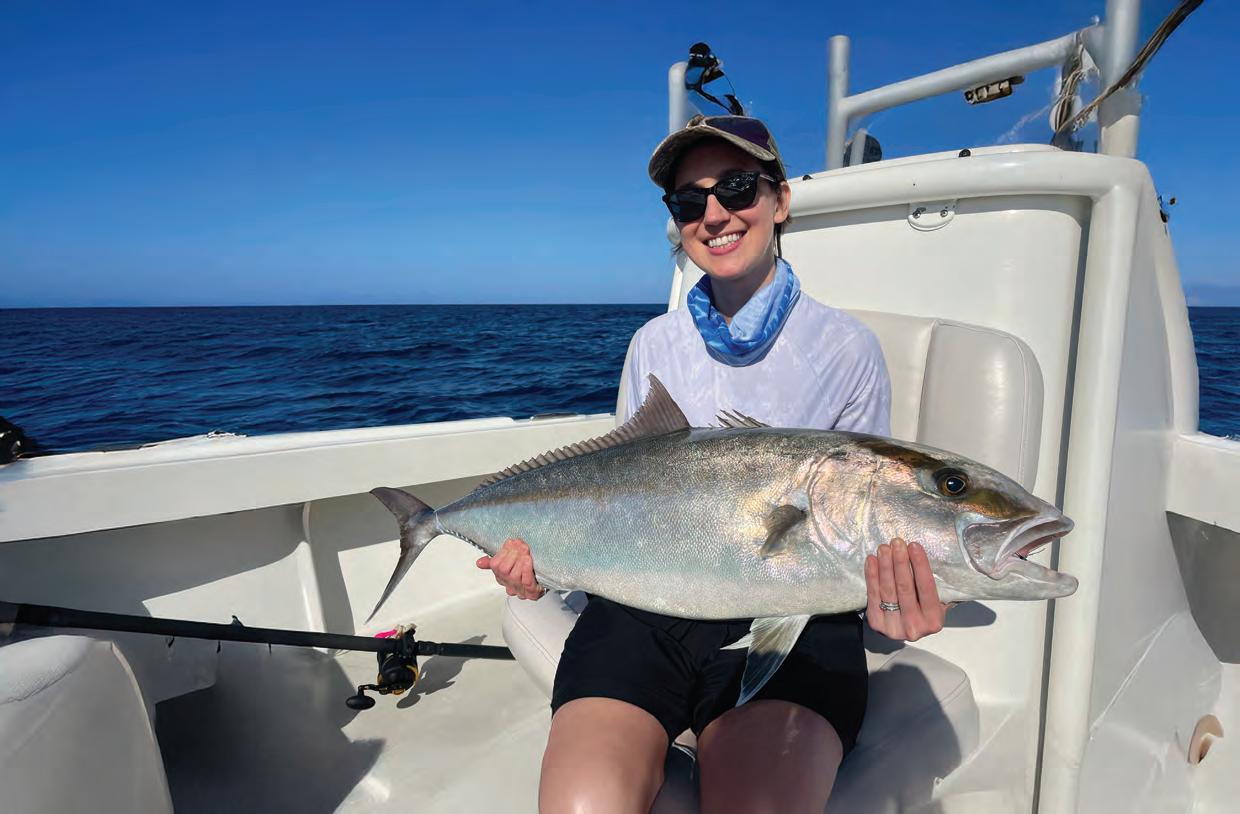
Finally, after a long winter filled with unexpected cold fronts, seemingly endless windy days, mysterious fog and a gigantic red tide bloom, we finally see light at the end of the tunnel! The water is warming up, the red tide is completely gone, and it’s time to get ready for our springtime species!
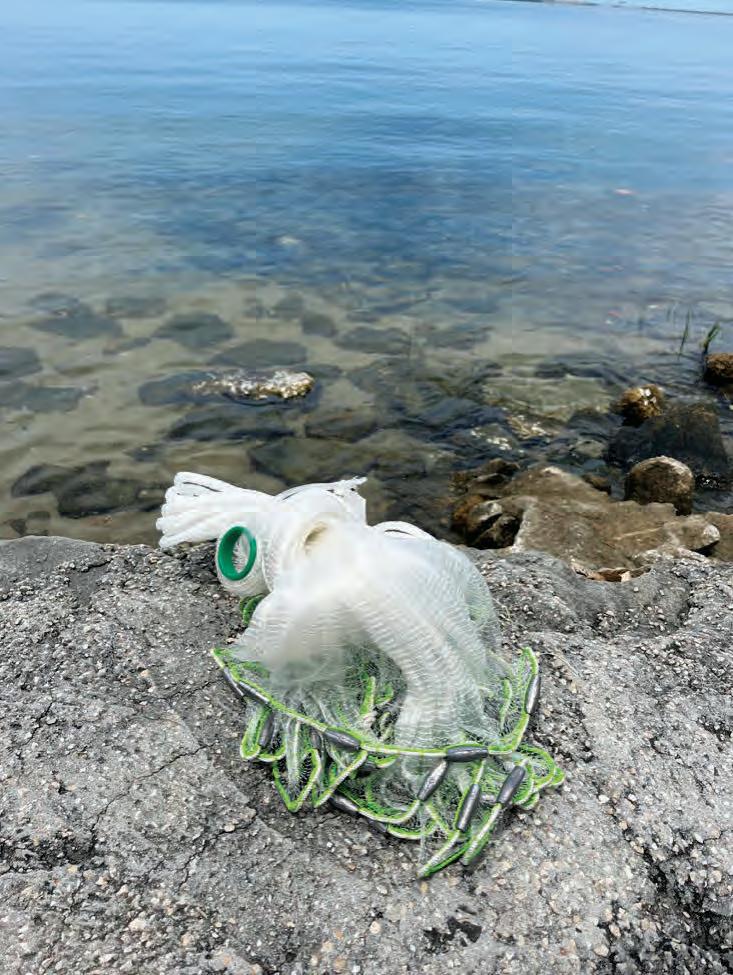

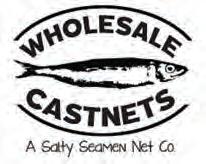
The backwaters have been relatively productive the past month. There have been snook and redfish hanging around the mangroves, and plenty of spotted seatrout on the flats and in the channels. Additionally, there have been some nice pompano being landed from the flats and sandbars. As always, the star of March has been the sheepshead, with plenty of fish being caught, including some offshore-sized sheeps that have been hanging in the back. As spring starts to arrive, expect to see more and more snook make their way from their wintertime stomping grounds up in the rivers as they make their way to the passes and beaches. After being absent for several weeks due to the red tide bloom, good backwater-sized pilchards have shown back up on our beaches, so we can finally throw the net for bait again.
Offshore has been equally as good. Inside of 40 miles the grouper bite has been fantastic. Red grouper have been chewing very well, and limiting out on a trip hasn’t been much of a problem. The big offshore sheepshead have also arrived in our area. We have been landing plenty of them in the 18-22 inch range. Sheepshead are a local favorite for the dinner table, but can be tricky for inexperienced anglers to catch. Small hooks or jigs with bits of shrimp is the way to go. One thing that has been missing this past month has been the pelagic fishes. Usually this time of year, we should be crushing kingfish every day. However, due to the red tide the kings didn’t migrate in this year. Permit, cobia, spanish, and other pelagic have also been scarce. However, just within the past week we have started catching pelagics again. This is due to the fact that the red tide has cleared, and the water is pristine again.
We also had some excellent offshore trips 40 miles and farther. There are more big hungry amberjacks around than you can handle, and the African pompano bite has been on fire! In addition, yellowtail and mangrove snapper have been chewing well farther out.
Spring is here, so make sure you are ready! Start swapping out the sheepshead rigs for tarpon gear, and get prepared for the arrival of our spring and summer fish! If you’d like to get out on the water and catch fish in the backwater, offshore, or on deep runs give Pale Horse Fishing Charters at (239)285-7710 and book your trip today!


by: Dan Carns

Every now and then someone crosses my path while guiding that not only has some natural abilities but is also hyper focused on the elements that help them master the sport of fishing. What I recently was unprepared for was this youngster who completely blew me away with his dedication.
Will was traveling to Fort Myers for a baseball tournament so his parents hired us to take him out Kayak Fishing. Due to the wind direction we

tried to launch on the western shore of Pine Island but found it too shallow so we back tracked and headed to Matlacha.
Once launched again, we headed to a spot that had been producing some Snook and Redfish. We found a bunch of Spotted Sea Trout on the way out and I began to recognize Will’s intense approach toward the fish. He was using all new gear to him including different lures and techniques, but he watched every single cast. Distance, water depth, speed of retrieval and disturbance near his cast. He was logging anything that presented differently from every previous cast. He also began to describe every hit and hookset like he was on film in a tournament. Mind you, Will is fourteen years old but his parents mentioned that he spends a lot of time fishing with his buddies.
We finally anchored up in front of a mangrove lined shore line that features a shell hash bottom that drops off quickly to about five feet deep. We threw a bunch of plastic baits but only received half-hearted tags that seemed more like the fish were annoyed at their presence. We switched to a Cajun Rattling cork tipped with a live shrimp on a circle hook, attached to about 20” of fluorocarbon leader. Will had never used this setup but on his first cast the cork went under instantly. Will gave the line his best Bass hookset and pulled the hook straight out of the fish’s mouth. After describing exactly how a circle hook works he sent his cork out and it again went instantly under. Like a longtime pro, Will patiently gave this fish a few seconds, slowly began to lift his rod while cranking the handle, drawing all the slack out and only when he felt the fish did he set the hook! This is a difficult maneuver to master but Will did it on the first try. Amazingly we had parked ourselves in front of a huge school of feeding Snook so after catching and photographing his fifteenth Snook I wondered if we were lower in the water column would we have the same luck. We re-rigged the cork with a 4’ leader and proceeded to boat five redfish in the exact same place. These fish were in the shell hash bottom feeding directly under the Snook!
Will spent the next two hours hyper focused on all the little details until he could pick and choose which species to catch while I sat in awe at this young future talent!
It’s A Wild World-Get Out There
Dan Carns
@paddlinandfishin
@gulfcoastkayak

By: Capt. Dave Stephens

We are approaching the time of year when a little bit of everything is happening around the waters of Southwest Florida. The water is consistently staying warm enough for the tarpon to start showing up in the harbors. Snook are feeding and getting ready for the summer spawning season, and the trout are on the local flats and bars. Areas with grass and sand holes mixed in 3 - 4' of water normally will be holding good fish. Often drifting is very successful, once you catch a couple fish anchor up and work that area. A fish that is often overlooked that migrates south in the spring is spanish mackerel. These fish can often be found in large schools in the harbor and are a lot of fun to catch, and you can fish them in many different ways. The most popular way is to anchor up on one of the local reefs in the harbor and chum with live bait. You can also put out a chum bag to help get
a chum slick going. Another popular way is trolling, most people like to troll little squid spoons with a small piece of light wire. If this is the technique you prefer, locating birds like turns will help to find feeding fish, and if you decide to anchor up and chum, I recommend having a big rod ready with a bigger bait. All this chumming could possibly attract a cobia or possibly a shark or two! This time of year, the options are wide open, so maybe spend a day outside your normal pattern. You never know you might find something you really enjoy.
If you would like to experience some of Charlotte Harbors finest fishing? Give us a call or send an email. All of our charters are private and customized to fit you and your party's needs.


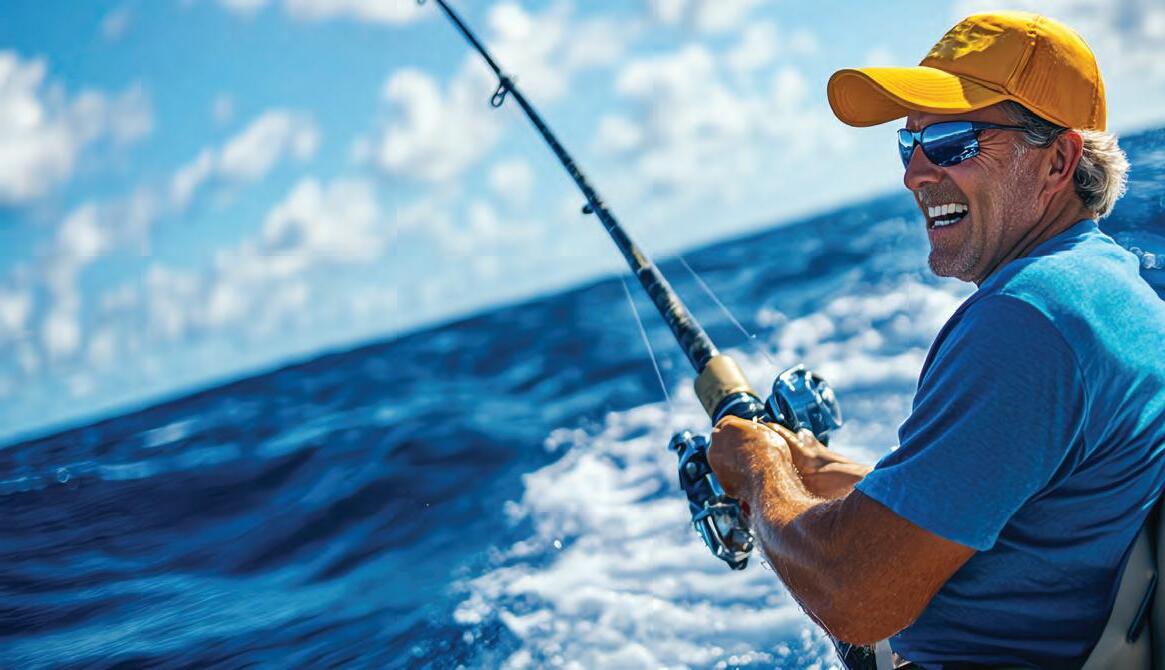




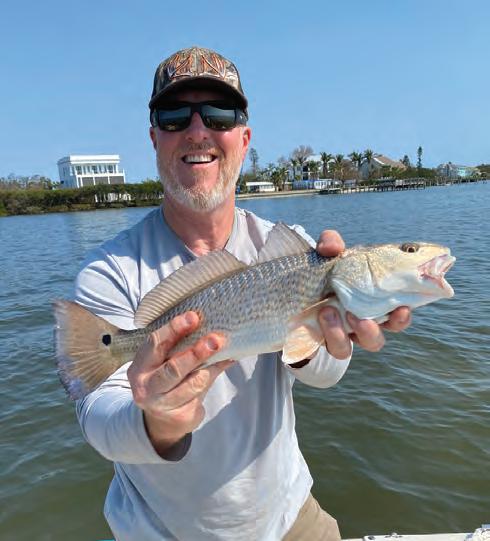
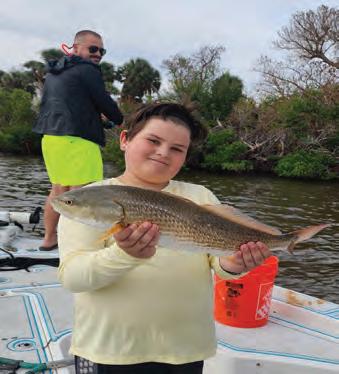

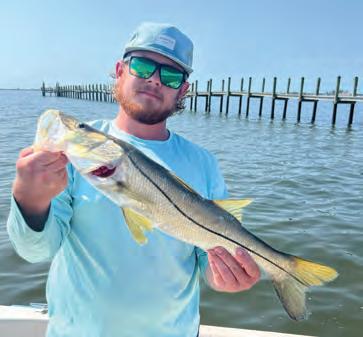
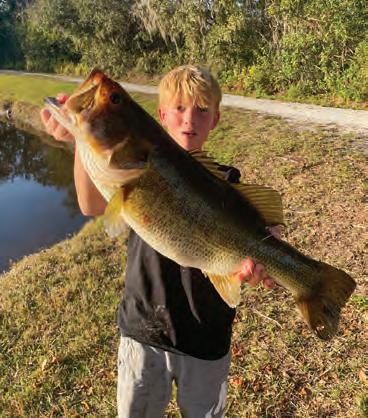
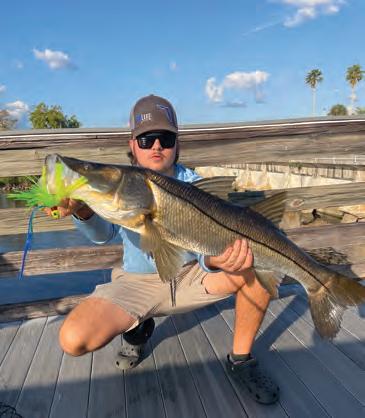
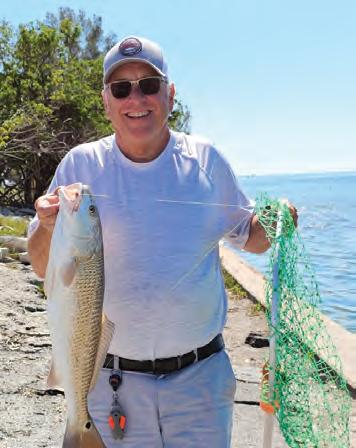
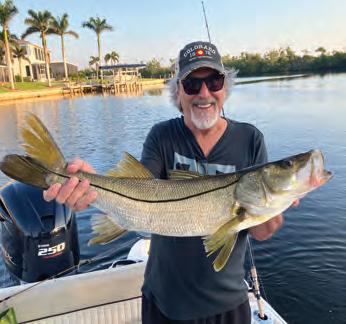













internationally and domestically in the destinations where they host each show.
In Sarasota, Informa’s U.S. Boat Show division partners with Mote Marine Laboratory and Aquarium in a fundraising e#ort and opportunity to put leading-edge ocean conservation science into action today. Donations to Mote Marine Laboratory and Aquarium can be made with ticket purchases for the Suncoast Boat Show.
Tickets for this year’s Suncoast Boat Show must be purchased in advance via the website https://www.suncoastboatshow.com/en/home.html Tickets are $20 and children ages 15 and under are free. Veterans and active-duty military show proof of military service for a free ticket. !e show opens on Friday, April 25 at 10:00 a.m. to 6:00 p.m., continuing Saturday, April 26 from 10:00 a.m. to 6:00 p.m. and Sunday, April 27, 2025 from 10:00 a.m. to 5:00 p.m. at Marina Jack, #2 Marina Plaza, Sarasota, Florida.

April 25-27, 2025 and presents an extraordinary selection of sport power boats and motor yachts in water and on land along Sarasota’s luxurious
e Suncoast Boat Show is hosted by the U.S. Boat Show division of Informa Markets, the exhibitions organizer that owns and operates the world’s leading international boat and yacht events. Integral to a corporate culture of sustainability, Informa U.S. Boat Shows has donated thousands of dollars to support multiple initiatives advocating for environmental preservation,
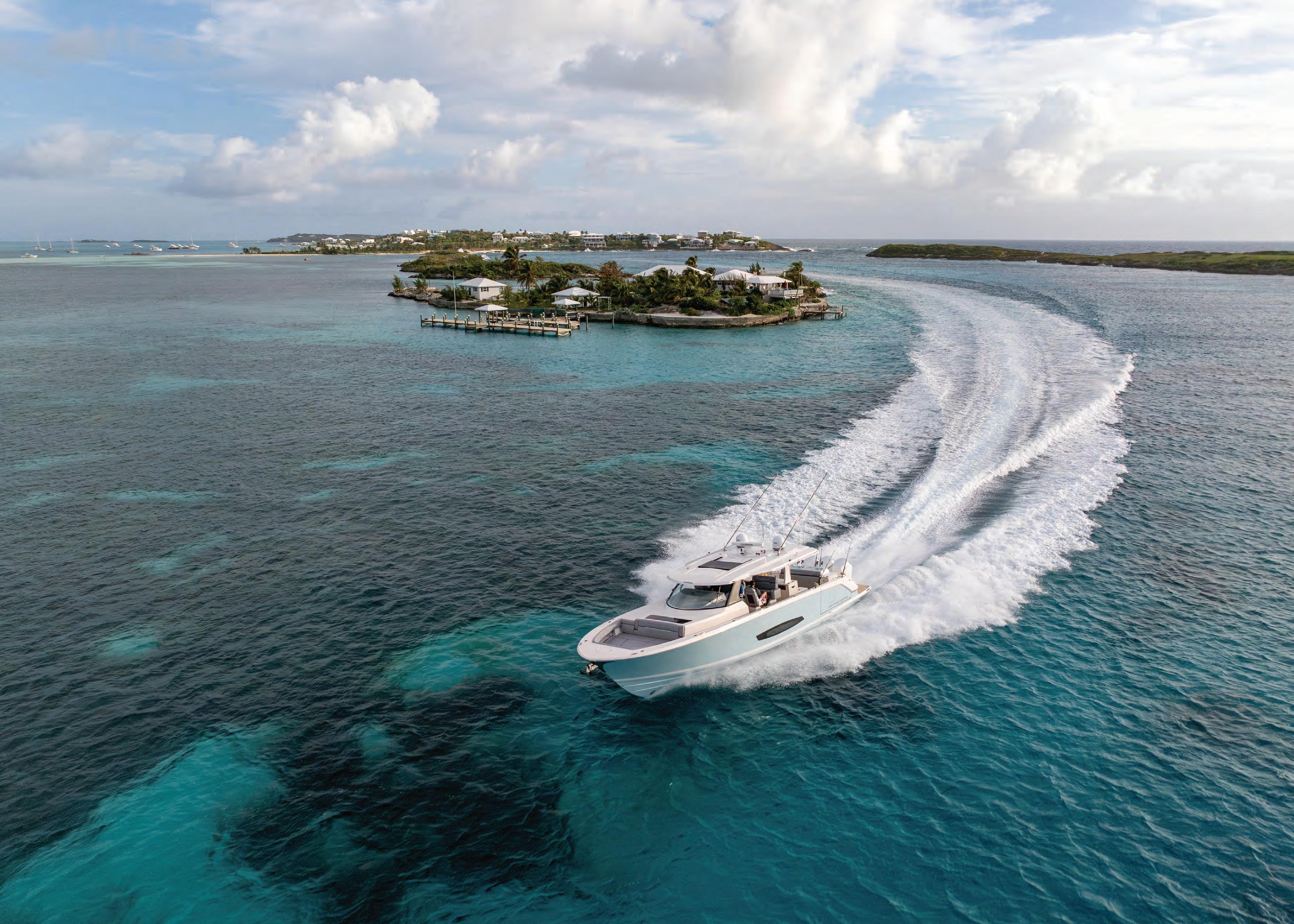
Established in 1955 by Dr. Eugenie Clark, Mote Marine Laboratory is a nonpro t organization working to protect and conserve marine resources. With over
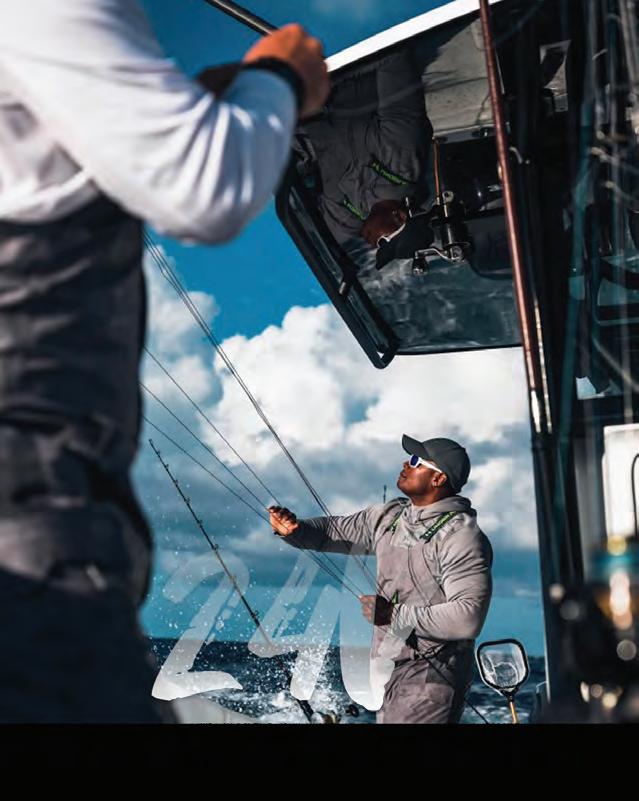
On Saturday and Sunday, well known Sportsman Channel host Captain gives each participant a free rod and reel. Captain Dingman is an expert angler other parents how important it is to spend quality time with their own kids. suncoastboatshow.com. Follow as details are updated on facebook.com/ SuncoastBoatShow; Twitter and Instagram: @suncoastboatshow.









APRIL 25-27


By atch Maguire
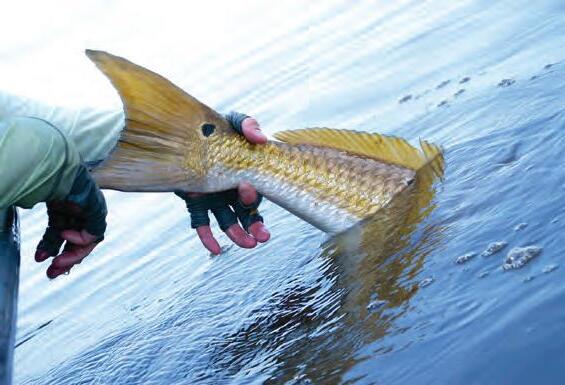
Fishing has long been a cherished pastime for millions around the world, o#ering a unique blend of relaxation, excitement, and connection to nature. However, with increasing pressure on aquatic ecosystems, ethical anglers are turning to catch and release shing as a means to enjoy the sport while safeguarding sh populations for future generations. !is practice, when done correctly, provides ecological, educational, and recreational bene ts that extend well beyond the individual angler.
One of the most signi cant advantages of catch and release shing is its role in conserving sh populations. Many popular sh species face threats from over shing, habitat loss, and climate change. By releasing sh back into their natural habitats, anglers help maintain healthy population levels, ensuring that future generations can continue to enjoy the sport.
To maximize the survival rate of released sh, it is essential to handle them properly. Techniques such as using barbless hooks, minimizing handling
time, and avoiding contact with the sh’s gills or slime coat are critical. Tools like rubberized landing nets and sh-friendly dehooking devices further reduce stress and injury, allowing the sh to recover and thrive.
Fish play integral roles in aquatic ecosystems, o$en serving as both predators and prey. Removing too many individuals from a population can disrupt these delicate balances, leading to cascading e#ects throughout the ecosystem. Catch and release shing helps mitigate this risk by allowing sh to return to their environment and continue ful lling their ecological roles. Healthy sh populations contribute to water quality, biodiversity, and the overall stability of aquatic habitats.
Catch and release shing also promotes a deeper sense of ethical responsibility and stewardship among anglers. It encourages a shi$ from viewing shing as purely extractive to appreciating it as an opportunity to engage with nature in a more sustainable way. !is perspective aligns with the principles of conservation-minded organizations, inspiring individuals to advocate for clean water, habitat restoration, and responsible shing practices.
Beyond the ecological bene ts, catch and release shing enriches the overall experience for anglers. Knowing that their actions contribute to conservation can provide a sense of ful llment and purpose. Additionally, the challenge of landing a sh, observing its beauty, and releasing it unharmed adds a layer of skill and respect to the sport. Many anglers report that the act of releasing a sh is as rewarding as catching it, if not more so.
Catch and release shing serves as a powerful teaching tool for younger generations. By involving children and new anglers in this practice, seasoned anglers can instill values of conservation and respect for nature. !ese lessons foster a lifelong appreciation for the environment and encourage responsible outdoor recreation.
In an era where human activities increasingly impact natural ecosystems, catch and release shing stands out as a practice that balances enjoyment with responsibility. By embracing this approach, anglers contribute to the preservation of sh populations, the stability of aquatic ecosystems, and the cultivation of ethical outdoor traditions. Whether shing for sport or relaxation, choosing to release your catch ensures that the thrill of the ght, the joy of connection, and the beauty of nature remain accessible for generations to come.



May 9th & 10th, 2025
Online Registration: MothersDayDolphinTournament.com
Captain’s Meeting
Liechty Marine
Friday May 9th - 6pm to 7pm
Lines In: Saturday, May 10 - 7:30am
Lines Out: Saturday, May 10 - 3:30pm
Weigh-In
Curly’s Co ee
Saturday, May 10th - 3:30pm to 6pm
Awards Banquet
Marathon Yacht Club
Saturday, May 10th - 7pm
Sunday Honor











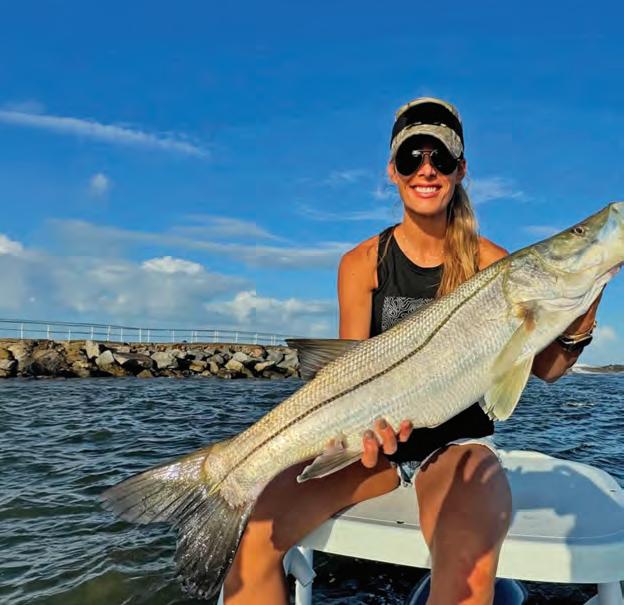
By A. deGruchy
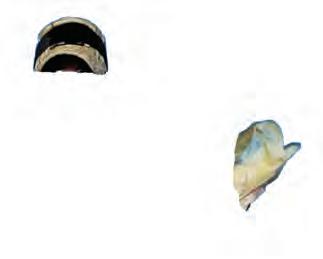
with lessons about life, responsibility, and the pure joy of shing, as well as expecting the unexpected. Fast forward to today, and I nd myself shing alongside my husband, a charter captain in the Florida Keys.
Fishing here isn’t just a pastime; it’s a way of life. From pulling in powerful Snook to chasing Sail sh on the edge of the reef, every trip o#ers new adventures. My husband and I share a love for shing, and I’ve learned so much about professionalism from watching him do his thing. Whether guiding seasoned anglers or teaching rst-timers, his patience, expertise, and enthusiasm shine. It’s a reminder that professionalism isn’t just about skill, it’s about how you treat people and create unforgettable experiences.
It’s been amazing to see more women embracing shing, from young girls joining family trips to seasoned anglers outpacing the boys on the boat. Even more inspiring is the rise of female captains and mates, rewriting the narrative and proving that grit, determination, and passion know no gender.
Fishing has always been about more than just the catch, it’s about family, adventure, and forging connections, both with the people you’re with and the water itself. Watching women claim their space on the water, competing and winning in major tournaments, and stepping into categories once dominated by men is a powerful reminder of how far we’ve come. Women are now sharing the joy of shing with their partners, landing incredible catches together, and showing that this sport is for everyone. !e waves we’re making are just getting started, and it’s inspiring to see skill and love for the ocean take center stage.
Fishing has long been a tradition passed down through generations, o$en painted as a male-dominated pursuit.
But like the tides, things are changing. Women are stepping aboard boats, rigging lines, and reeling in trophies, proving that the waters are open to everyone. As someone who grew up with a shing rod in hand, I’ve seen this transformation rsthand, and it’s inspiring.
My journey into shing began thanks to my dad. He was the one who introduced me to shing. !ose early days were lled

So here’s to the women who sh, lead, and inspire. May your lines be tight, your horizons wide, and your stories endless.
Whether you’re a seasoned angler or a rst-time sher, let’s create memories together. Book your trip now at www.beansport shing.com and experience the thrill for yourself!
Be sure to follow Astrid’s adventures on Instagram, @catching_astrid and @bean_sport shing.



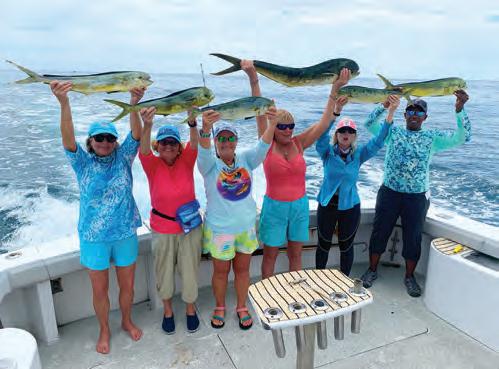

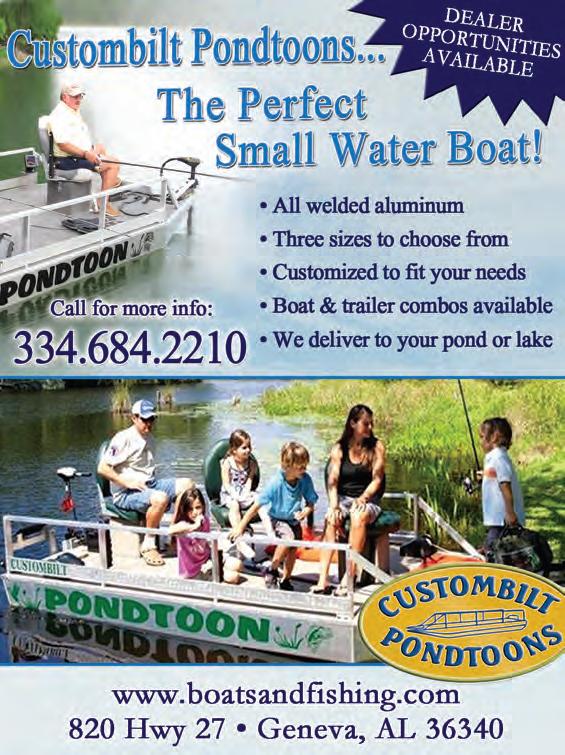




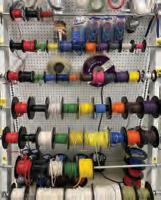







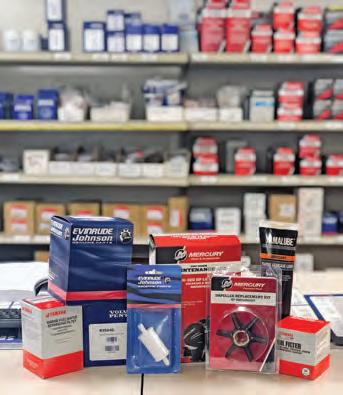








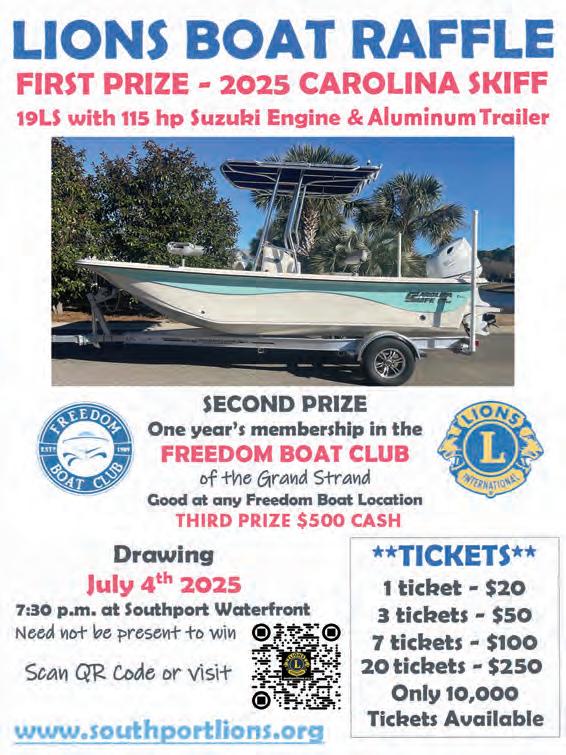
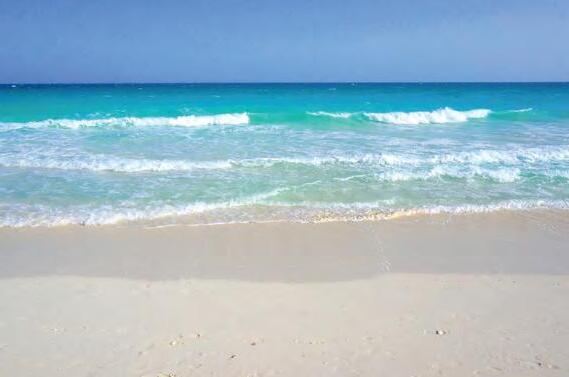
By
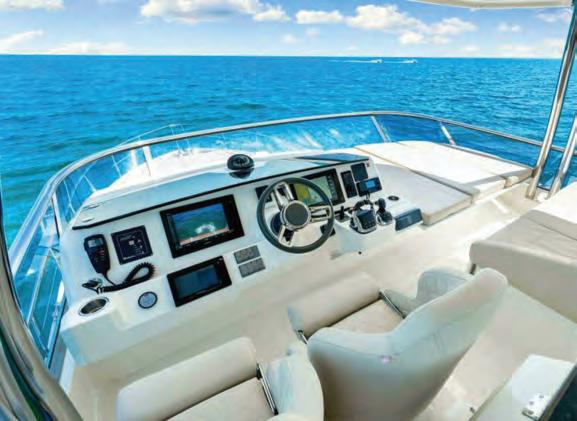
The recreational shing industry is on the brink of a technological revolution, with autonomous boating emerging as a transformative force. While self-driving cars have dominated headlines, the development of autonomous boats is quietly reshaping how anglers approach their favorite pastime. !ese advancements promise to enhance safety, e ciency, and accessibility, potentially changing the way people experience shing forever.
One of the most signi cant bene ts of autonomous boating in recreational shing is the ability to optimize navigation. Advanced GPS and AI-driven systems can analyze weather patterns, water conditions, and sh activity to chart the best possible routes. Instead of relying solely on experience or guesswork, anglers could have boats that take them to the most promising shing spots with precision. !is technology reduces the time spent searching for sh and maximizes the chances of a successful outing.








Bradenton - May 12
Clearwater - Jun 2
Tampa/Brandon - Jun 16
Crystal River - July 7 Palm Bay - July 7
Crystal River - May 10-12
Bradenton - May 24-26
Palm Bay - July 19 – 21
Safety is another critical aspect that autonomous boats could improve. Many shing accidents occur due to human error, whether it’s navigating unfamiliar waters, dealing with sudden weather changes, or simply losing focus. With AI-driven controls, boats could automatically adjust speed, avoid obstacles, and even return to shore if conditions become too dangerous. !is level of automation provides an added layer of security, especially for solo anglers who might face emergencies without immediate help.
Accessibility is another area where autonomous boats could make a profound impact. For many, operating a traditional shing boat requires skill, physical e#ort, and extensive knowledge. !ose with limited mobility or minimal boating experience o$en face challenges when trying to enjoy shing on the water. Autonomous technology could allow more people to participate by simplifying the boating experience. With user-friendly controls or even remote operation via a smartphone app, individuals of all backgrounds and abilities could enjoy shing without the steep learning curve associated with traditional boating.
!e integration of smart shing technology into autonomous boats could further enhance the angling experience. Innovations like underwater imaging, automated bait deployment, and real-time sh tracking are already making their way into modern shing gear. When combined with an autonomous vessel, these tools could provide an unprecedented level of e ciency. Imagine a boat that not only takes you to the ideal shing location but also adjusts its position based on sh movement, current ow, and water depth. Such advancements could make shing more productive and enjoyable than ever before.
Despite the promising future of autonomous boating in recreational shing, challenges remain. !e cost of developing and maintaining this technology is still high, potentially limiting accessibility for the average angler. Regulatory concerns also pose hurdles, as governments and maritime authorities must determine how autonomous boats t within existing laws. Additionally, traditionalists in the shing community may resist the shi$ toward automation, arguing that it takes away the skill and personal connection that make shing special.
As technology continues to evolve, autonomous boats will likely become more sophisticated, a#ordable, and widely accepted. Just as GPS revolutionized navigation and sh nders improved catch rates, AI-driven boats have the potential to rede ne the recreational shing experience. While the transition may take time, the possibilities are endless, and the future of autonomous boating in shing looks
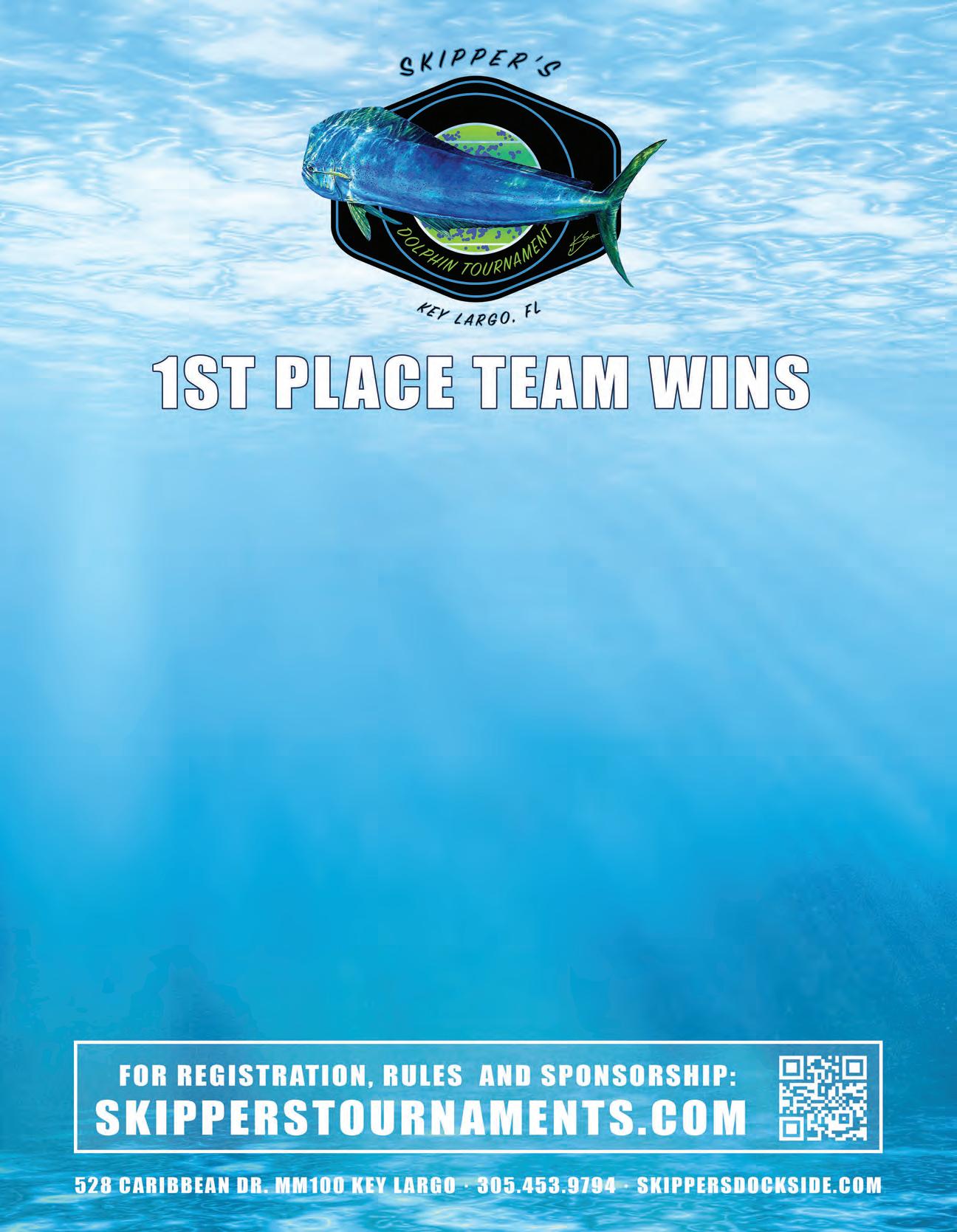






The National Pediatric Cancer Foundation (NPCF) created “Fishing Funds the Cure” to raise awareness and funds for crucial research. Each year, they unite corporate partners, passionate anglers, and dedicated supporters for Fishing Funds the Cure Tournaments through an activity that everyone loves. ese exciting inshore and freshwater shing tournaments are held in beautiful locations like St. Pete Beach and Sarasota, Florida, San Juan, Puerto Rico, and more. Each event, thoughtfully designed to engage supporters, features a kick-o celebration, angler swag bags, an awards dinner and a silent auction, all dedicated to making a meaningful impact.
NPCF organizes these events to blend the universal love for shing with an important cause. eir mission is to conduct research leading to less toxic and more therapeutic treatments for children with cancer, and are committed to making a di erence in a system that o$en neglects our children. Despite their bright futures, only 4% of government funding for cancer research supports pediatric initiatives, highlighting the urgent need for advocacy.
NPCF has made remarkable progress and is recognized as the nation’s leading solution, delivering rapid, innovative, and e%cient science
through a collaborative network of 40 hospitals. Operating independently of pharmaceutical and government funding, with eight institutions noted in the “Top 20” by US News, they have invested over $40 million in translational studies and clinical trials. NPCF currently have 30 studies and 11 active trials:
• A new drug compound – which could be the 11th drug utilized to treat children
• Blood bio-marker study – which could be a prevention indicator for relapse patients
• A rare disease trial addressing “rhabdomyosarcoma”
• Multiple combined immunotherapy trials to include a potential vaccine
• NPCF has also authorized the “ rst-ever” education toolkit – provided to pediatric cancer families
• ey are also developing treatment guidelines for relapse patients
If shing is your passion, NPCF invites you to channel that enthusiasm toward a worthy cause. Join them at one of their tournaments, organize your own fundraising event, or take on their “43 Challenge” to honor the 43 children diagnosed

with cancer every day. You can easily start by using NPCF’s online fundraising tool, challenging 43 friends to sh, and encouraging them to donate $43.
e National Pediatric Cancer Foundation is proud to be a top-rated charity, with 89% of every dollar donated directly supporting research. To learn more, visit NationalPCF.org.
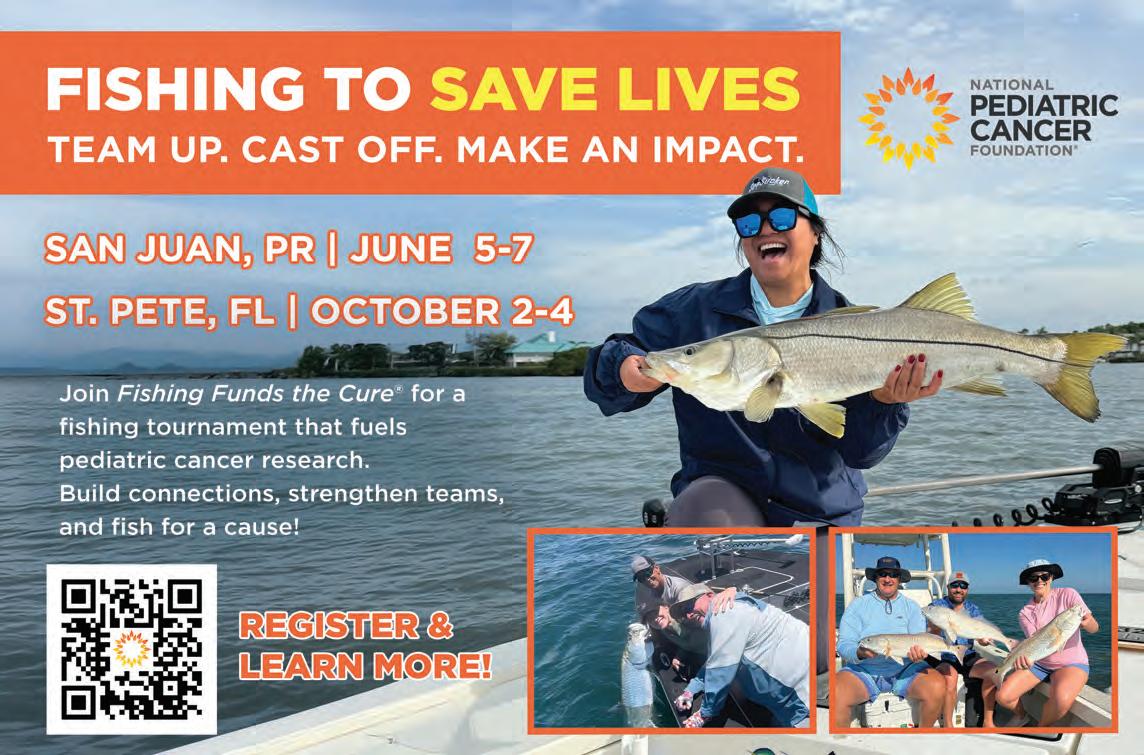
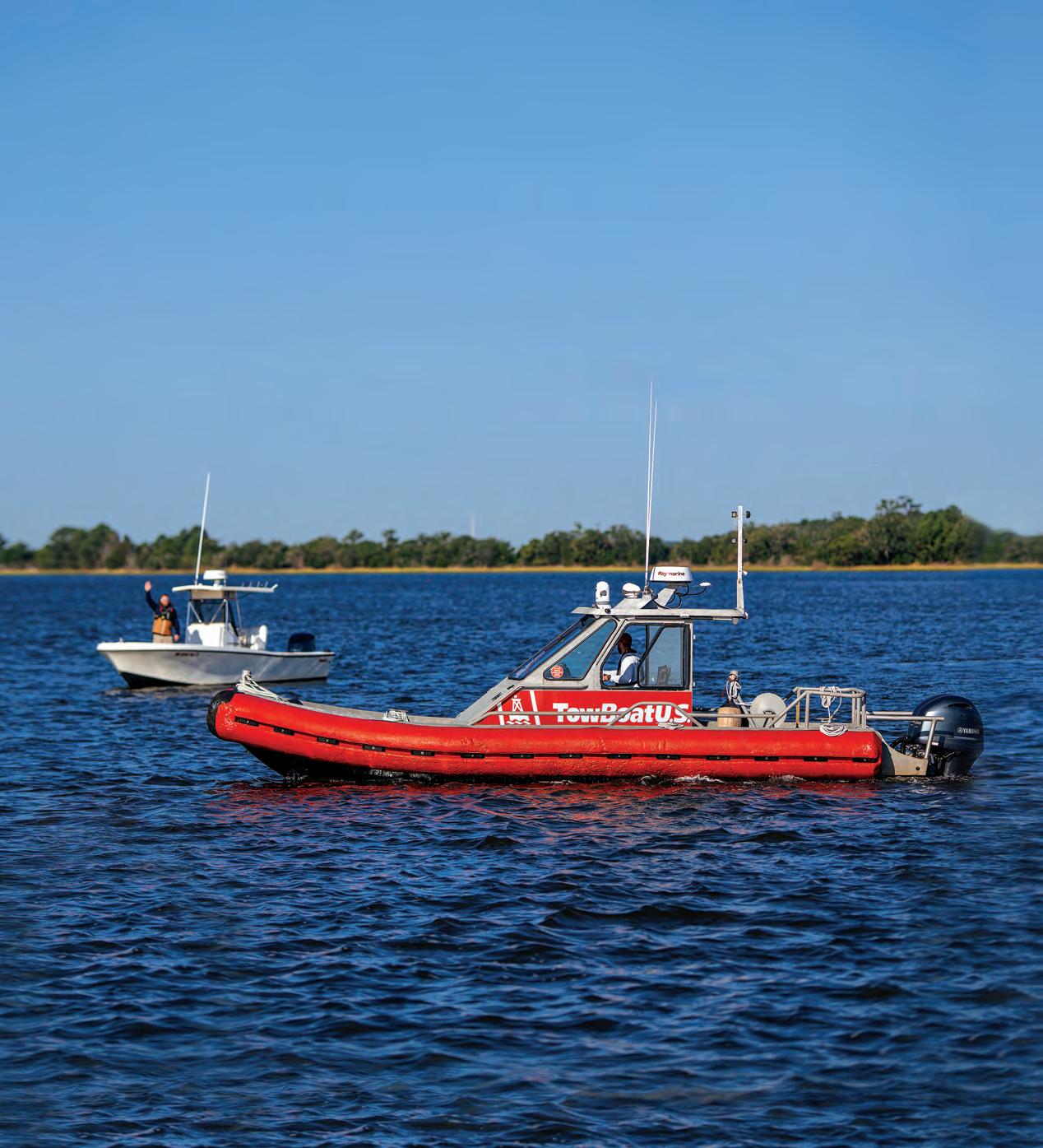




The month of April is when the real change comes around. For a number of reasons, April can be a game changer. Just for starters, we have made it out of the month of March and the “Gales of March.” !e temperatures will rise, the daylight hours will be longer, and the urge to spawn will get stronger for a lot of species.
!e pelagics will be on the march up the coast headed north, and I have taken a much di erent approach to shing in general, but especially for the pelagics. Sure, we may troll for a short period in the morning to mark some bait and/or productive bottom holding sh like African pompano, big snapper and grouper, but trolling will quickly stop and dri$ing and/ or %ying the kite will begin as the sun rises in the sky. As the title of the article suggests, we have either stopped on the way out or will start to work with the Sabiki right away.
!is is the key: when you have the live bait, you get the bites. Don’t hesitate to bring bait from the dock like pin sh, menhaden, etc. to use as light-line kite bait or bottom bait. Sometimes it’s just easier to pull up beside the bait barge and exchange some green for sardines, cigar minnows, goggle eyes, etc., so you can just get on with getting to where





Tim Barefoot

you’re going and start shing right o the bat. When you nd a good mark of bait, and hopefully bottom structure, the stage is set. Put the kite %oats, tackle or freelines out and start sending the jigs to the mid or lower water
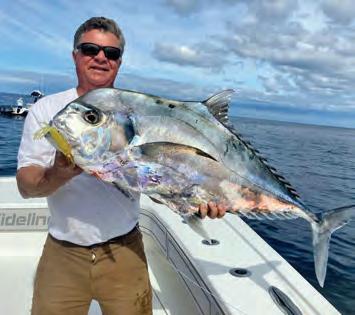
column, and even to the bottom. Of course, I like a natural looking squid jig you can cast to breaking sh that’s heavy enough to sh in the mid to lower water column or a few hundred feet deep when needed on the bottom. the
entire time you were harvesting sh on the jig pay attention to the free line or %oat baits and keep some chum going if possible. !is is a great way to bring the sh to you. !ey will de nitely come to the chum.
As always, I would pay attention to the amount of noise you make. Don’t let cooler lids slam down or hard objects hit the deck; this will send a soundwave hundreds of yards away from the boat telling the sh something isn’t right. If you’re dri$ing quietly with a chum slick out and beautiful live baits, you have a recipe for success!
!is is a great time of year to catch that African pompano of a lifetime in 150- to 250foot range as they are ready to break up into smaller schools for spawning. Again, I like a squid-type jig because it is the primary food source for the African pompano. It is the bulk of their diet according to the experts. And it’s not just African pompano; everything out there, without exception, eats a squid. !is is a great way to catch big snappers as well. Pull up to where the marks are, make a dri$ and repeat as o$en as needed. A trolling motor upfront can slow the dri$ nicely, keeping your boat forward in the wind with the kite bait or %oat, and baits behind the boat very manageable.
And be sure to keep an eye on the recorder to know where to keep the jig in front of sh.
For more info on the squid jig and dri ing, check out Tim Barefoot’s YouTube channel and website, barefootcatsandtackle.com.
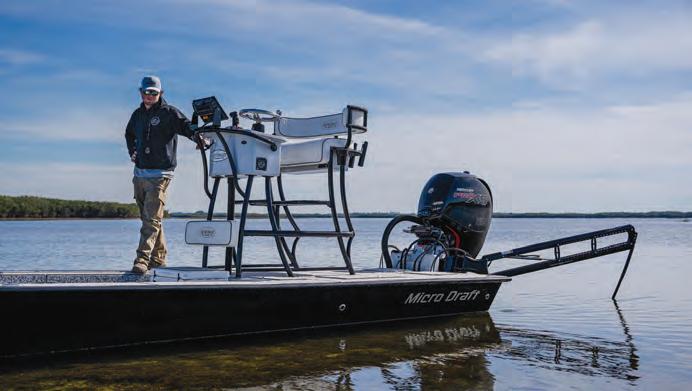





It was a warm summer afternoon and my wife and I were mingling with the best of them. The occasion was a 1920s-themed party, and everyone was dressed to the nines. Parked on the manse’s circular driveway was a beautiful classic convertible. It was here that I got the idea for our new 1920s Retrograde Watch.
Never ones to miss an opportunity, we carefully steadied our glasses of bubbly and climbed into the car’s long front seat. Among the many opulent features on display was a series of dashboard dials that accentuated the car’s lavish aura. One of those dials inspired our 1920s Retrograde Watch, a genuinely unique timepiece that marries timeless style with modern technology.

With its remarkable retrograde hour and minute indicators, sunburst guilloche face and precision movement, this design is truly one of a kind. What does retrograde mean? Instead of displaying the hands rotating on an axis like most watches, the hands sweep in a semicircle, then return to their starting point and begin all over again.

Retrograde watches by the big brands can set you back thousands; one recent offering from a big French fashion house is selling for more than $150,000! But because we’ve designed the 1920s Retrograde Watch in-house, we can offer it to you for just $99!
This watch is so wildly popular with our customers that we’re actually concerned about running out; we only have 937 729 left for this ad!
Join more than 1 MILLION smart people who love stauer watches

Watch Specifications:
• Precision movement
• Stainless steel case, caseback and crown
• Retrograde hour and minute indicators
• Water-resistant to 5 ATM




• Brown genuine leather band
• Fits wrists up to 8"
1920s Retrograde Watch
$399 $99* + S&P Save $300


*Special price only for customers using the offer code.





“An elegant and exciting timepiece that every collector will love.”
— George Tomas, internationally renowned watch expert



“[A] unique and beautiful timepiece.”
— Carlos C., Los Banos, CA





By Don Norton

Most anglers think of Lake Okeechobee, Florida, and many other great shing lakes as a destination for largemouth bass. And they truly are. But for those in the know, “Lake O” boasts some of the greatest bluegill shing you’ll nd anywhere in the country.
!is is the time of the year—April and May—that bluegill anglers look forward to all year long. !is is when the feisty, hard- ghting pan sh begin their annual spawn. !eir popularity is unmatched with young and experienced anglers looking to test their light line and tackle.
While bluegill is a single species (Lepomis macrochirus), it is sometimes categorized into three subspecies: the northern bluegill, the coppernose
bluegill, and the southwestern bluegill.
To add to the confusion, redear sun sh and bluegills, both belonging to the sun sh family, are easily confused, but can be distinguished by the red or orange coloration around the redear’s operculum (gill %ap), while bluegills have a dark blue to black operculum. Redear sun sh typically grow larger than bluegills, but are o$en caught in the same area, as are coppernose bluegill.
Bluegills are so plentiful that many anglers come to Lake Okeechobee every year just for them and go home with coolers full of their tasty lets. !e daily limit is $y pan sh per angler, and that’s not a hard number to reach when the season is in full swing.
Bluegills can be caught year-round, but when they come into the shallows to spawn, they become a much easier target. Many anglers will test their skills with a %yrod and small popper, while others will use live bait, light line, and tackle—and even bamboo cane poles!
On average, bluegill typically range from six to eight inches in length, although some can grow up to 10 to 15 inches. Nine inches is considered a decent keeper in the “Big O.”

To rig for bluegill, use a small hook (size 8-10) with a light line, a small split shot a few inches above the hook, and a bobber set to suspend your bait near the bottom; commonly used live baits include small worms, waxworms, or crickets, and you can also try small jigs or tiny so$ plastic baits depending on the situation and water depth.
When it comes to the time of day that produces the best bluegill shing, many anglers recommend early evening. As the sun begins to set, waters tend to calm down and %ying insects quickly become a big part of the menu.
But during the spawn, bluegills can be caught all day long.

Finding the beds is relatively easy. Just look in shallow water, 5-foot deep or less for small circular divots in the sandy bottom. !ese “beds” will o$en be close together and will sometimes number in the hundreds.
!e world record bluegill—a sh weighing 4 pounds, 12 ounces— was caught in 1950 in Ketona Lake, Alabama with a cane pole and common worms.
Don Norton is Co-Publisher of Coastal Angler Magazine’s Okeechobee edition. Contact him at (863) 273-4998 or don@theanglermagazine.com.











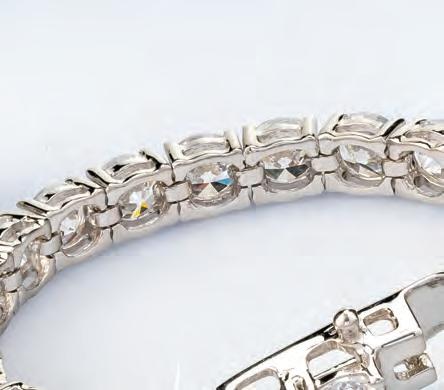


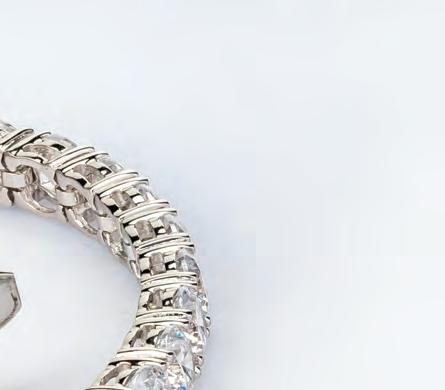

Praise for DiamondAura®
“So much sparkle and the play of light on DiamondAura® beats any diamond!” — D.D. from Columbus, OH
A classic tennis bracelet serves up over 10 carats of sparkle for a guaranteed win
It was the jewelry piece that made the world stop and take notice. In the middle of a long volley during the big American tennis tournament, the chic blonde athlete had to stop play because her delicate diamond bracelet had broken and she had to fnd it. Te tennis star recovered her beloved bracelet, but the world would never be the same.
From that moment on, the tennis bracelet has been on the lips and on the wrists of women in the know. Once called eternity bracelets, these bands of diamonds were known from then on as tennis bracelets, and remain the hot ticket item with jewelers.


with D Flawless diamonds from another company that costs $57,000!
Want to look like a million bucks without stressing over losing or damaging something that cost you a fortune? Te Love Wins Tennis Bracelet is a simple strand of glittering gems in precious sterling that epitomizes elegance.
FREE earrings with your purchase of the Love Wins Bracelet.

Te frst time we ofered this bracelet, we sold out literally in minutes. It was our fastest selling product of 2021. It took six months to get it back in stock — Get yours before we run out!
And there’s more... we will also include our Ultimate Diamond Alternative™ DiamondAura® stud earrings for FREE!
Jewelry Specifcations:

• 10 ¾ ctw of the Ultimate Diamond Alternative®, DiamondAura®
• Rhodium-fnished .925 sterling silver settings
• Bracelet: Fits wrists to 7 ½". Earrings: 1 ctw with post backs


We’ve captured this timeless classic with over 10 total carats of DiamondAura®, our signature diamond alternative stone. Tis sparkling marvel rivals even the fnest diamonds (D Flawless) with its transparent color and clarity, and both are so hard they can cut glass. Don’t believe me? Te book “Jewelry and Gems – Te Buying Guide,” praised the technique used in our diamond alternative DiamondAura®: “Te best diamond simulation to date, and even some jewelers have mistaken these stones for mined diamonds,” it raved. For comparison, we found a similarly designed 10 carat tennis bracelet
Love Wins Tennis Bracelet (10 ¾ ctw) $399 $39* + S&P
FREE stud earrings (1 ctw) with your purchase of the Love Wins Bracelet — a $99 value!
*Special price only for customers using the offer code.

Your Offer Code: LWB343-02
TYLER WOOLCOTT

ne of my all time favorite times of year to fish with one of the most fun ways to catch a bass. The spawn and post spawn feed is here for most of us in the south and it won’t be long for many others in the other parts of the country. There is a plethora of ways to catch these bass, but my all time favorite for getting bit and drawing in a big one is a hollow body popping frog.
A popping frog can be used as an incredible search bait, duplicating many different baitfish depending on where you throw it and what color you tie on. There are many different options out there, but I try to duplicate the baitfish forage in the particular lake I am fishing on. Sometimes I will stick to a frog that may imitate a bluegill, and sometimes I throw a color that would imitate a shad. Finding a frog that pops well, has good colors, and a big hook is a few things that need to check the boxes for me. The Gambler popping frog is good and so is the Spro.
When I throw a frog as a search bait, I like to work it faster than most. Cover as much water as possible until you put a pattern together on what exactly the fish are focusing on. That’s the magic of a frog; you can literally throw it around everything! Docks, lay downs, grass and down banks are just a few of the targets I would look for. Once you locate a group of fish or find that right area that they are using you can slow down and pick them off a little slower. I have noticed sometimes there isn’t a “too fast” while working a popping frog.
A couple things that I look for this time of year are areas with active fish spawning, fry guarding bass, and also fish roaming the banks feeding on bluegill. This is something that is very predictable and an awesome way to catch big ones when you get around it. Typically, if you know of a few areas that the fish had previously spawned, these patterns will be occurring in the same areas. I throw a bluegill pattern popping frog because the bluegill will typically be a fish that chase their fry and a fish that drives them crazy this time of year.
Another pattern that you might want to keep your eyes out for is a shad spawn. This usually occurs in the mornings and in the evenings and can be a way to catch a bunch of fish in a hurry. We typically look for birds feeding on banks while running down the lake; you find the birds, you find the bait! A white popping frog or a baitfish color is typically my choice in this situation as a lot of times these fish are so keyed in on the baitfish that you’ll want to match the hatch.
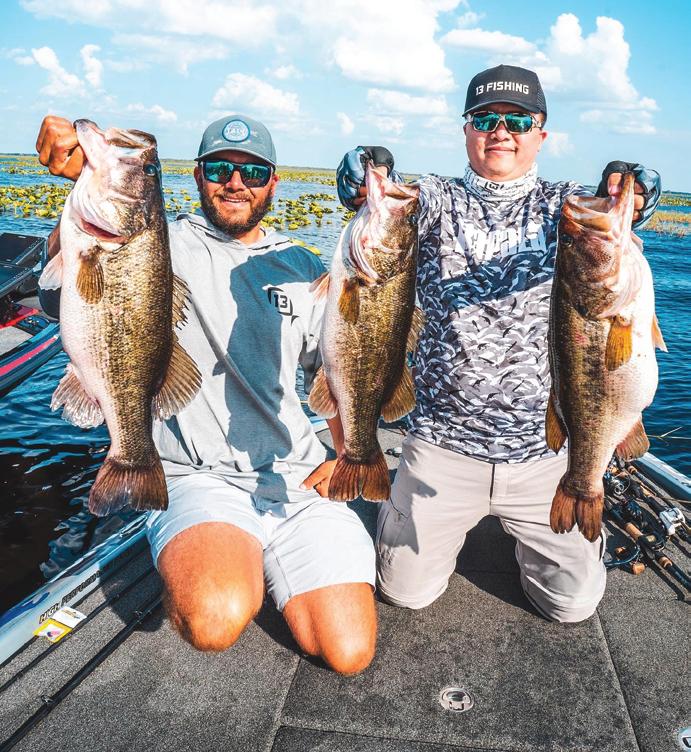
A popping frog can work all year long, but this time of year I think it excels the greatest. It’s an incredible search bait that really drives these fish crazy, and who doesn’t like catching fish on a topwater with heavy line and a heavy rod? Grab a popping frog and go catch some big bass! Frog Fishing Gear: Typically when throwing a popping frog you will be around some heavy cover and need to have some big hooks to get through the fish’s mouth. This calls for a heavy rod, some big line and a fast-geared reel. I like to throw a 13 Fishing 7’4H Myth rod paired with a Concept A 8.3 reel spooled up with Sufix 832 50 lb. braid. This setup will allow you to get the fish out of the heavy cover and into the boat.
Tyler Woolcott is a professional tournament angler and guide. Check out his website at www.tylerwoolcottfishing.com.

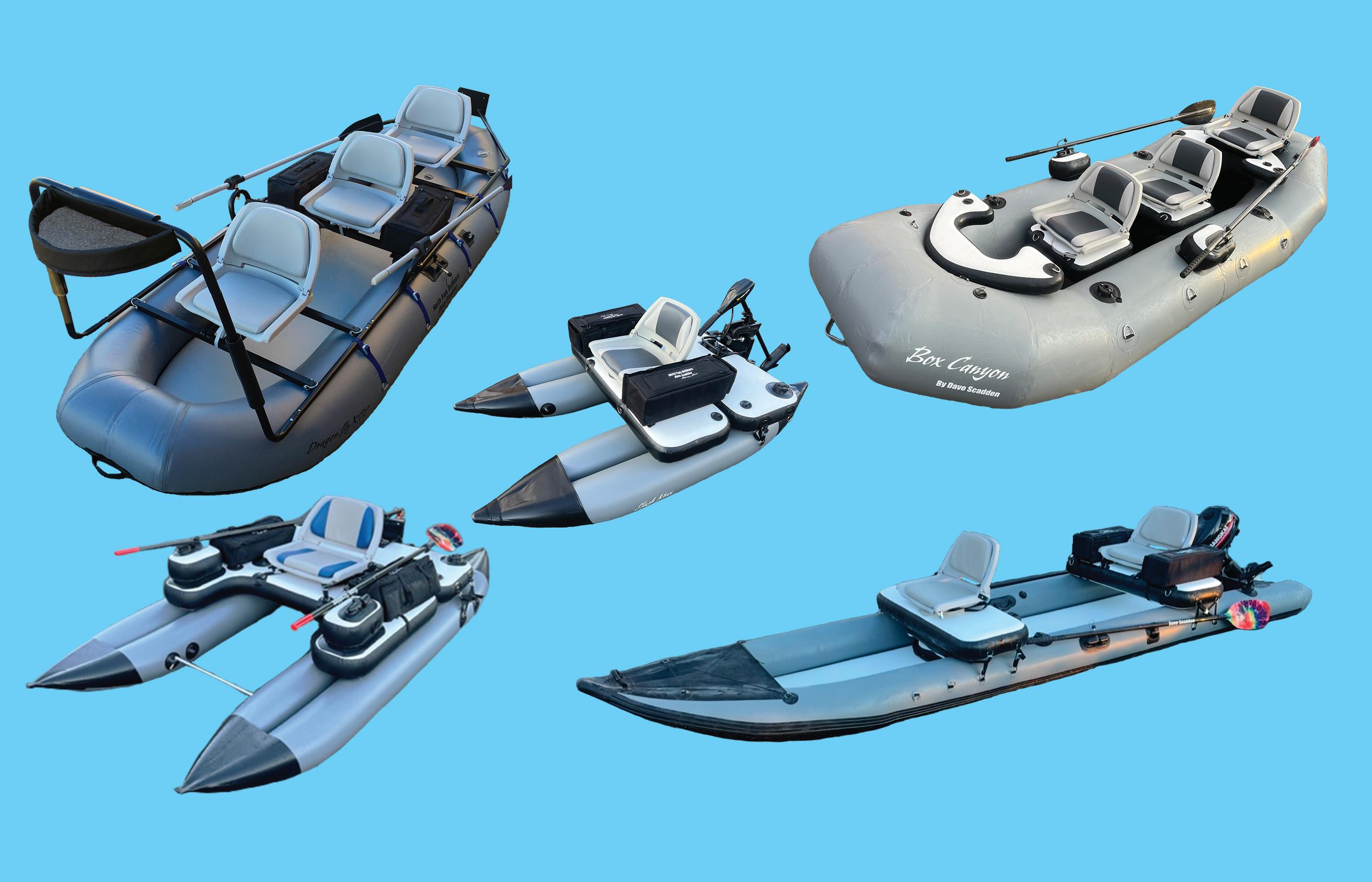





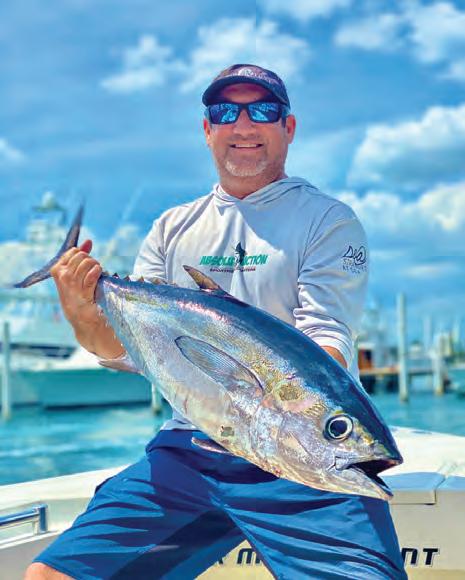






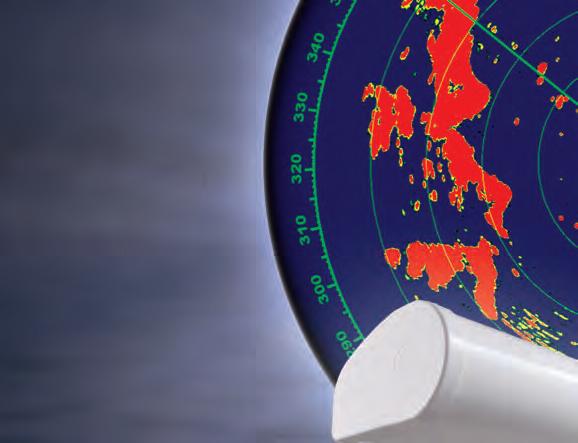
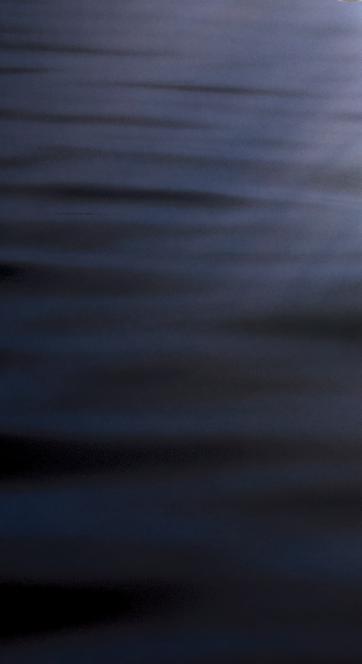




You’re looking at it! Furuno’s award-winning Radar gives you clarity & target separation like no one else. Don’t take our word for it. See for yourself. Scan here, and we’ll show you! DRS4DNXTDRS6ANXT




